

|
 |
Raising Cain (Blu-ray)
[Blu-ray]
Blu-ray B - United Kingdom - Arrow Films Review written by and copyright: Paul Lewis (11th February 2017). |
|
The Film
 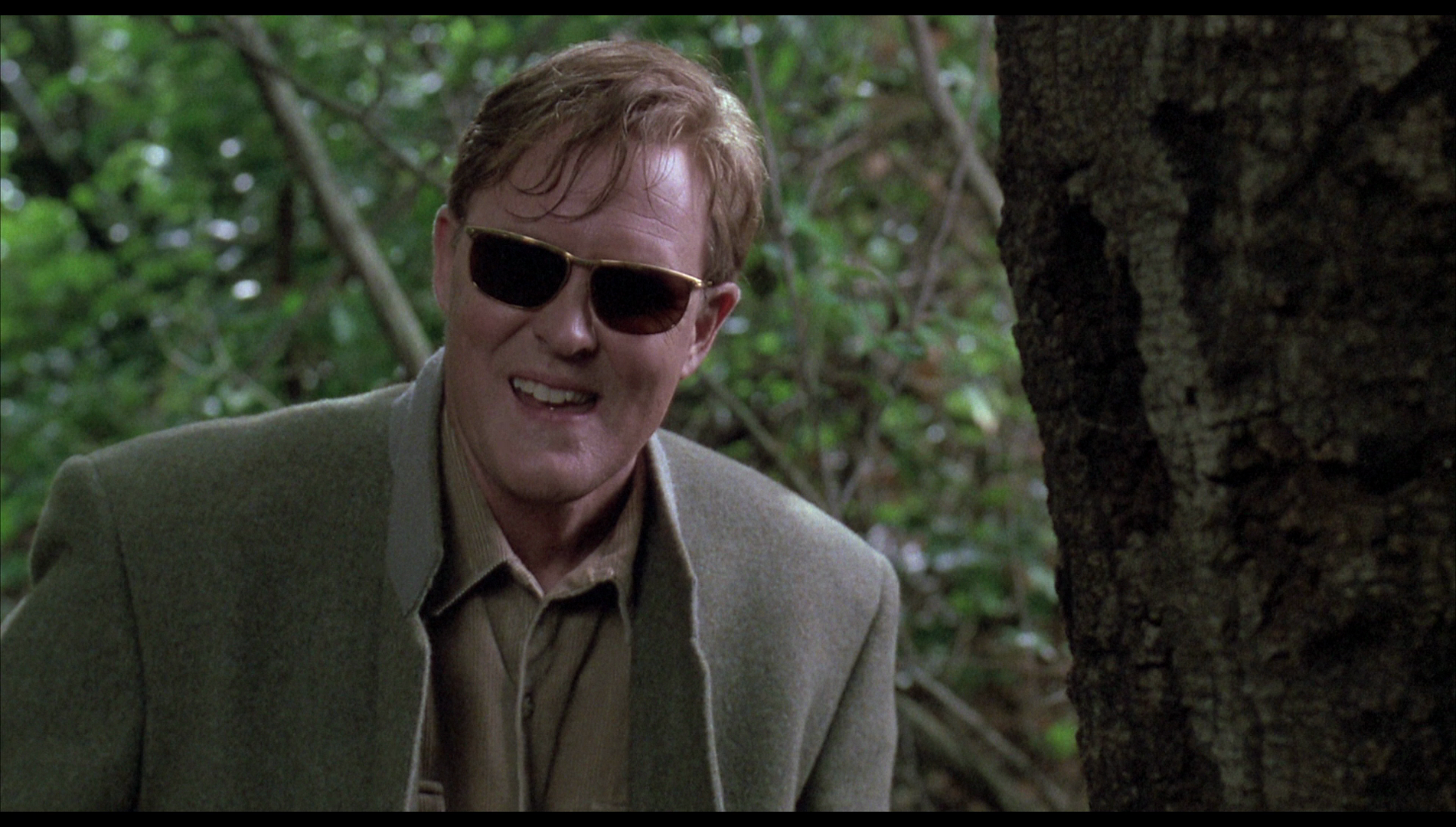 Raising Cain (Brian De Palma, 1992) Raising Cain (Brian De Palma, 1992)
Coming after the critical disaster that was director Brian De Palma’s adaptation of The Bonfire of the Vanities (1991) and receiving a mixed reaction at the time of its original release from both fans of the director’s previous films and a broader audience, Brian De Palma’s Raising Cain offered a very direct pastiche of elements of both De Palma’s previous films and the work of other filmmakers. The film seemed almost as if it were intended to ‘bait’ those critics who had decried the perceived lack of originality within De Palma’s previous films. Where De Palma’s previous pictures had often drawn on the iconography and plotting of various iconic (and sometimes less well-known) thrillers in a highly metafictional way, Raising Cain upped the ante to such an extent that it left many viewers alienated. De Palma’s work had often attracted criticisms of the director’s self-conscious and overt reliance on, and repackaging of, elements of other films – from Hitchcock’s Hollywood thrillers, a recurring benchmark for De Palma’s cinema, to thrilling all’italiana pictures such as Dario Argento’s L’uccello dalle piume di cristallo (1971), from which De Palma ‘borrowed’ the staging of the elevator murder in Dressed to Kill (1979), for example – which led to accusations of plagiarism and an absence of originality. However, in truth De Palma’s use of pastiche was simply an escalation of a tradition that had existed within Hollywood cinema for decades and would become even more prevalent in the 1990s with the highly allusive work of ‘video store’ filmmakers like Quentin Tarantino and Kevin Smith, whose work featured explicit riffs on existing films  However, in some ways Raising Cain represents the purest distillation of the abiding theme of De Palma’s career: the theme of doubling, both of identity and of the world itself (ie, the juxtaposition between the ‘straight’ world and its dark, twisted underside). In many ways, De Palma’s films are like Lewis Carroll’s Alice’s Adventures in Wonderland, with De Palma using both camera and sound design creatively to take us through the proverbial rabbit hole. Raising Cain anchors its theme of doubling via an extraordinary performance by John Lithgow, who performs multiple roles within the film. The most immediate reference point, in terms of contemporaneous cinema, is Jeremy Iron’s performance as the twin gynaecologists in David Cronenberg’s Dead Ringers (1988). However, in terms of the sheer restlessness of Lithgow’s performances within Raising Cain, and their occasional tendency towards camp humour, a more apt comparison might perhaps be made with Peter Sellers’ depiction of multiple characters in films such as The Mouse That Roared (Jack Arnold, 1959) and Dr Strangelove, or: How I Learned to Stop Worrying and Love the Bomb (Stanley Kubrick, 1964). However, in some ways Raising Cain represents the purest distillation of the abiding theme of De Palma’s career: the theme of doubling, both of identity and of the world itself (ie, the juxtaposition between the ‘straight’ world and its dark, twisted underside). In many ways, De Palma’s films are like Lewis Carroll’s Alice’s Adventures in Wonderland, with De Palma using both camera and sound design creatively to take us through the proverbial rabbit hole. Raising Cain anchors its theme of doubling via an extraordinary performance by John Lithgow, who performs multiple roles within the film. The most immediate reference point, in terms of contemporaneous cinema, is Jeremy Iron’s performance as the twin gynaecologists in David Cronenberg’s Dead Ringers (1988). However, in terms of the sheer restlessness of Lithgow’s performances within Raising Cain, and their occasional tendency towards camp humour, a more apt comparison might perhaps be made with Peter Sellers’ depiction of multiple characters in films such as The Mouse That Roared (Jack Arnold, 1959) and Dr Strangelove, or: How I Learned to Stop Worrying and Love the Bomb (Stanley Kubrick, 1964).
Here, Lithgow portrays Carter Nix, an apparently loving father of a toddler daughter, Amy. A psychologist, Clarence has taken an extended period of time off work to care for his daughter, but his wife Jenny (Lolita Davidovich) begins to resent her husband’s role in their child’s upbringing, expressing to her friend Sarah (Mel Harris) that she believes Carter may be using Amy as a case study in his role as a developmental psychologist.  One day, whilst buying a Valentine’s Day gift for Carter, Jenny meets an old flame, Jack (Steven Bauer). She begins an affair with him, meeting him in the park where the couple make love in an isolated location. However, she is spotted by Carter, who we quickly realise is also inhabited by an alternate personality, Cain. Where Carter is restrained and civilised, Cain is cold, calculating and uncouth. Carter and Cain have been abducting children, killing their unsuspecting mothers, and delivering the children to Carter/Cain’s father Dr Nix (also played by John Lithgow), who plans to use the children in his work as an experimental child psychologist. One day, whilst buying a Valentine’s Day gift for Carter, Jenny meets an old flame, Jack (Steven Bauer). She begins an affair with him, meeting him in the park where the couple make love in an isolated location. However, she is spotted by Carter, who we quickly realise is also inhabited by an alternate personality, Cain. Where Carter is restrained and civilised, Cain is cold, calculating and uncouth. Carter and Cain have been abducting children, killing their unsuspecting mothers, and delivering the children to Carter/Cain’s father Dr Nix (also played by John Lithgow), who plans to use the children in his work as an experimental child psychologist.
Cain quickly comes up with a solution to Carter’s problem, killing a babysitter and framing Jack for the murder. Cain also suffocates Jenny with a pillow, hiding her body in the boot of a car before dumping the vehicle in a lake – only to discover that Jenny is still alive. She bangs desperately on the car’s rear window as the vehicle sinks into the water. Carter visits the police station and reports the disappearance of Jenny and Amy. The police deduce that a suspected serial killer may be responsible. However, a retired detective who happens to be at the police station reflects on an old case involving Nix’s father, who was purchasing babies on which he would experiment. The police call in Dr Waldheim (Frances Sternhagen), Dr Nix’s former research assistant. Waldheim tells the police that Nix wrote a book called Raising Cain: The Creation and Evolution of the Multiple Personality. (Ironically, a few years after the film’s release, a real-life book about child development was published with a similar title, Daniel Kindlon’s Raising Cain: Protecting the Emotional Life of Boys.) Nix’s key case study was a patient called ‘Cain’, a subject who Nix refused to introduce to Waldheim. 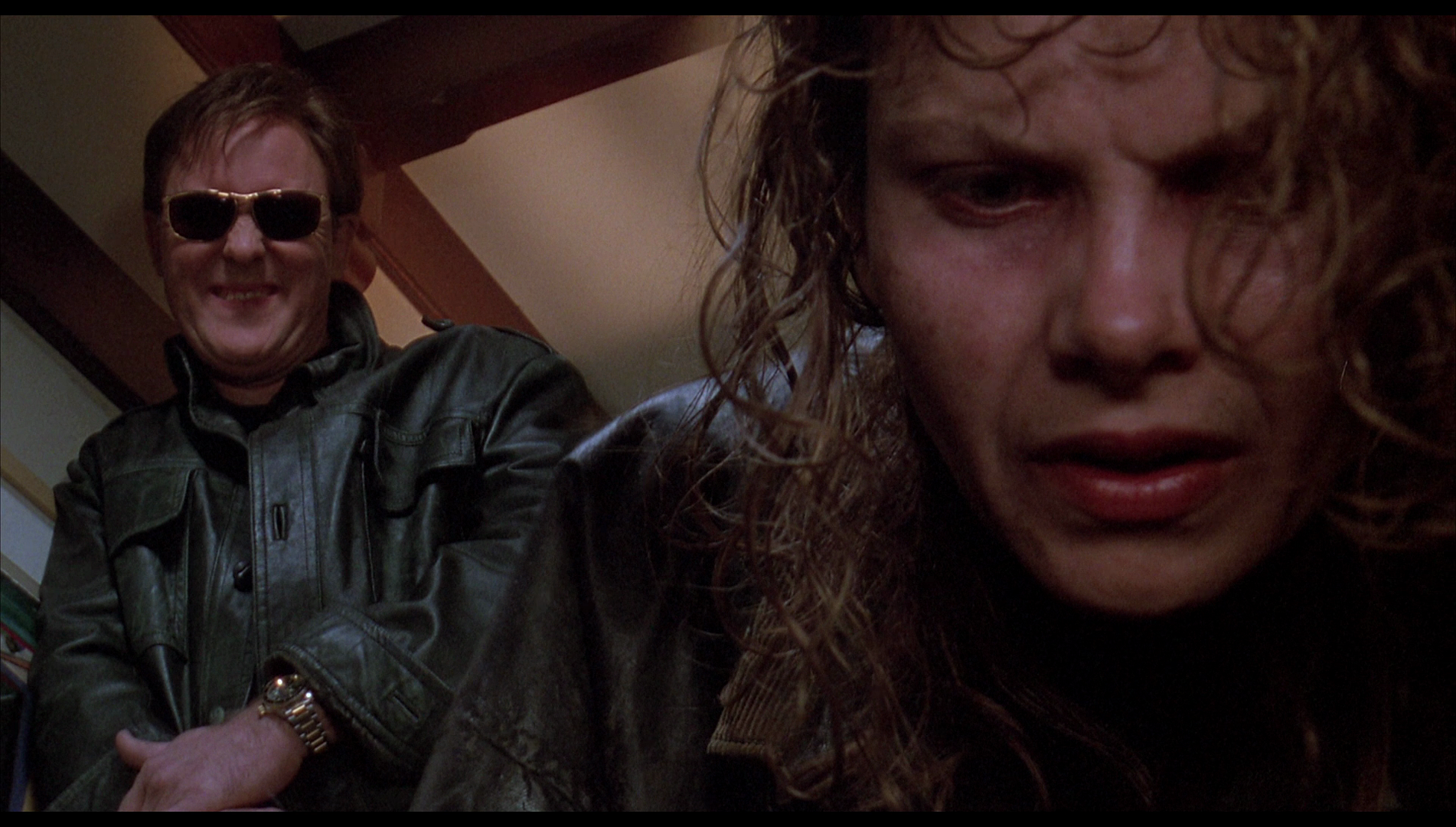 The police arrest Jack. Meanwhile, Carter returns home to find Jenny there: she has survived her ordeal and is now seeking her daughter, Amy. Jenny attacks Carter violently, demanding he tell her where Amy is. Cain appears and asserts, ‘I took her to dear old dad’. The police arrest Carter, and insist that their records show that Dr Nix committed suicide eighteen years prior. They enlist Dr Waldheim’s help in communicating with Carter, who has retreated into his alternate personalities, in an attempt at identifying the whereabouts of Amy. The police arrest Jack. Meanwhile, Carter returns home to find Jenny there: she has survived her ordeal and is now seeking her daughter, Amy. Jenny attacks Carter violently, demanding he tell her where Amy is. Cain appears and asserts, ‘I took her to dear old dad’. The police arrest Carter, and insist that their records show that Dr Nix committed suicide eighteen years prior. They enlist Dr Waldheim’s help in communicating with Carter, who has retreated into his alternate personalities, in an attempt at identifying the whereabouts of Amy.
The major reference points for Raising Cain seem to be Hitchcock’s Psycho (1960) and Michael Powell’s Peeping Tom (1960). Like the latter film, Raising Cain features a protagonist who is the son of a child psychologist whose experiments on his own child have left the protagonist attempting to reconcile an outwardly kind, gentle nature with a murderous desire which bubbles beneath the surface of his sense of self. Like Psycho, Raising Cain features an extended sequence in which a psychologist attempts to explain the behaviour of the film’s principle antagonist (in Psycho, Norman Bates; in Raising Cain, Cain). In words that echo those of psychiatrist Dr Fred Richmond (Simon Oakland), whose pat explanation of Norman Bates’ behaviour Hitchcock subtly satirises (‘She was there! But she was a corpse. So he began to think and speak for her, give her half his life [….] Now he was never all Norman, but he was often only mother’), Dr Waldheim tells the detectives that Carter is harmless: ‘Carter didn’t do anything’, she insists, ‘Cain did all the killing [….] When something bad happens to Carter, or when something bad has to be done, Carter blacks out and Cain takes over’. 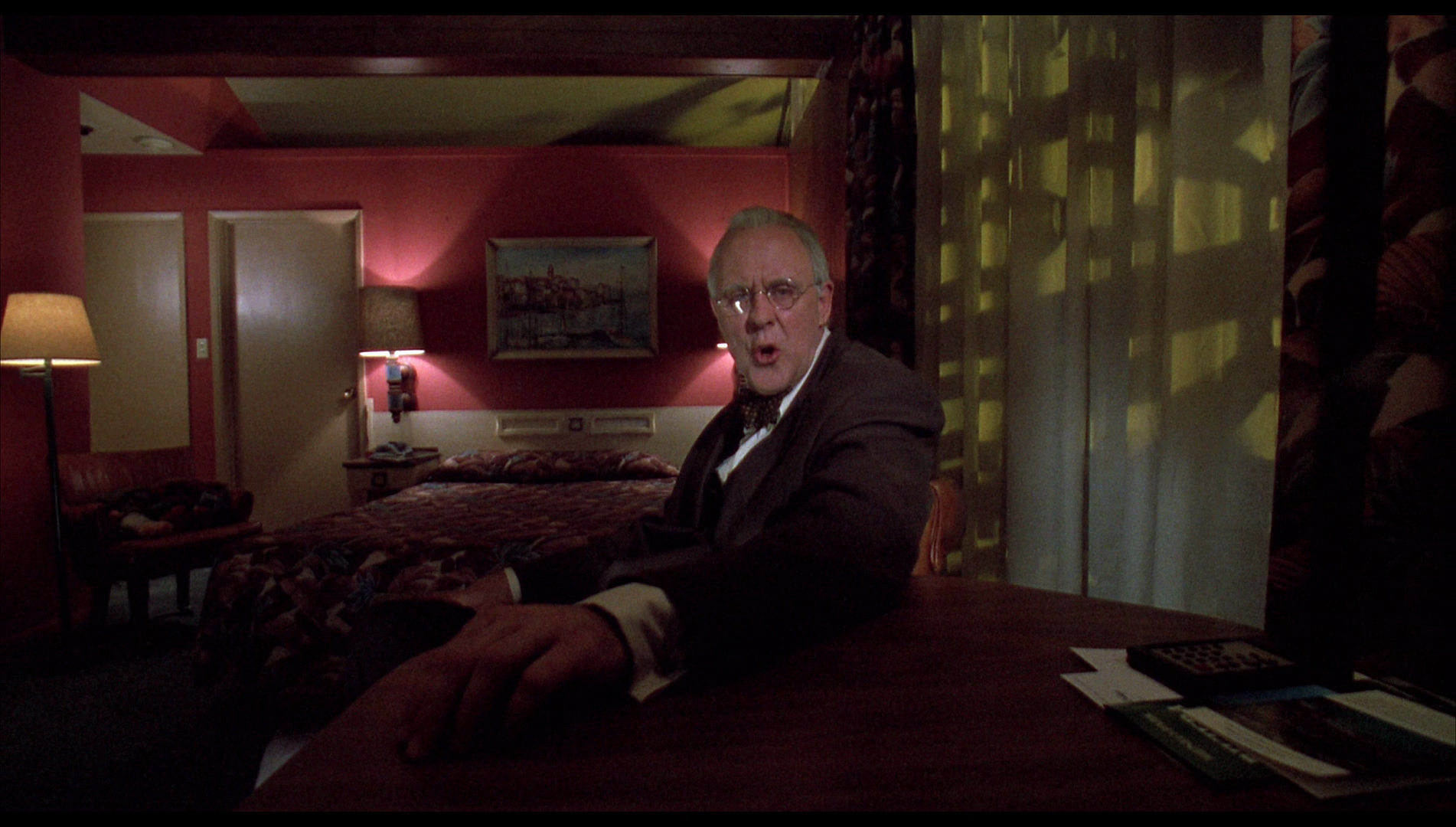 In Raising Cain, the doubling of identity – expressed in the revelation that Carter has a number of personalities – directly references Hitchcock’s Psycho and the revelation, at the end of the film, that Norman Bates has internalised ‘Mother’ and has committed the murders depicted in the film whilst believing himself to be ‘Mother’. On the other hand, from very early on in the film Raising Cain makes it patently obvious that Carter is suffering from some sort of multiple personality disorder. Cain’s first appearance, at the window of the car as Carter claims his first (onscreen) victim, Karen, suggests that Cain is nothing more than a projection by Carter. In Raising Cain, the doubling of identity – expressed in the revelation that Carter has a number of personalities – directly references Hitchcock’s Psycho and the revelation, at the end of the film, that Norman Bates has internalised ‘Mother’ and has committed the murders depicted in the film whilst believing himself to be ‘Mother’. On the other hand, from very early on in the film Raising Cain makes it patently obvious that Carter is suffering from some sort of multiple personality disorder. Cain’s first appearance, at the window of the car as Carter claims his first (onscreen) victim, Karen, suggests that Cain is nothing more than a projection by Carter.
Waldheim’s account of Carter’s behaviour also links the film with Peeping Tom: in Michael Powell’s picture, the behaviour of murderer Mark Lewis (Carl Boehm) is explained as a product of his childhood, in which his psychologist father (played by the film’s director, Michael Powell) used Mark as a subject in his experiments about fear and its effects on the nervous system. In Raising Cain, Waldheim tells the detectives, and the audience, that cases of multiple personality disorder arise when the subject has experienced severe childhood trauma; the subject creates alternate personalities as a coping mechanism, helping them to repress the trauma by associating it with the alternate persona. Waldheim suggests that though she never met Cain, the chief subject of Dr Nix’s research, she came to the conclusion that ‘he [Nix] had created Cain’s multiple personalities in order to study them. He had taken some innocent child and split its personality. Now he needed a control group to test his theories. That’s what he was buying the babies for’.  Like a number of other films from the 1980s and 1990s, including Sam Peckinpah’s final picture The Osterman Weekend (1984), Raising Cain begins with the titles playing out over images which unfold on a video monitor – the monitor Carter has insisted he and Jenny use to keep an eye on their young daughter. The film opens with an extremely tight close-up of the video monitor, to the extent that the images playing out on it are indiscernible; as the opening titles begin to appear on screen, the camera pulls back to reveal Carter laying in bed with Amy, stroking her hair and settling her to sleep. Of course, at this stage the audience isn’t aware that Carter is Amy’s father, and the image is creepy and unsettling, pointing to a theme of how deceptive appearances may be. The use of the video monitor also hints at a theme of surveillance. Like a number of other films from the 1980s and 1990s, including Sam Peckinpah’s final picture The Osterman Weekend (1984), Raising Cain begins with the titles playing out over images which unfold on a video monitor – the monitor Carter has insisted he and Jenny use to keep an eye on their young daughter. The film opens with an extremely tight close-up of the video monitor, to the extent that the images playing out on it are indiscernible; as the opening titles begin to appear on screen, the camera pulls back to reveal Carter laying in bed with Amy, stroking her hair and settling her to sleep. Of course, at this stage the audience isn’t aware that Carter is Amy’s father, and the image is creepy and unsettling, pointing to a theme of how deceptive appearances may be. The use of the video monitor also hints at a theme of surveillance.
De Palma’s films had frequently drawn on motifs, both narrative and visual, from Hitchcock’s American films – to the extent that Thomas M Leitch once wrote that ‘De Palma often seems to have spent his formative years locked in a projection booth with only prints of Vertigo and Psycho and a thousand-pound box of jujubes’ (Leitch, 2002: 182). However, Raising Cain features some incredibly overt riffs on Hitchcock’s pictures, including a replication by De Palma of the famous scene from Psycho in which Norman Bates dumps the car containing the corpse of Marion Crane, and the money she has stolen, in the swamp and we watch the vehicle slowly sink into the swamp’s murky depths. Here, in Raising Cain, the vehicle is the car in which Clarence has concealed the body of his wife, who he believes to be dead, and Clarence drives this vehicle into a lake. The composition of the shots showing the car slowly sliding into the lake, and the cutaways to Clarence as he stands and watches the vehicle disappear, are almost identical to the corresponding sequence in the Hitchcock film – and the overall outcome for the audience is the same: we are encouraged to sympathise with the killer, feeling anxiety and a rising sense of panic for this murderer as he watches the metal coffin slip away, clearly hoping that no witnesses happen by at that exact moment. However, the sense that we have seen this scene before is undercut when, in a moment which may startle the viewer, Clarence’s wife reveals herself to be still alive and bangs desperately on the rear window of the car, screaming Clarence’s name. 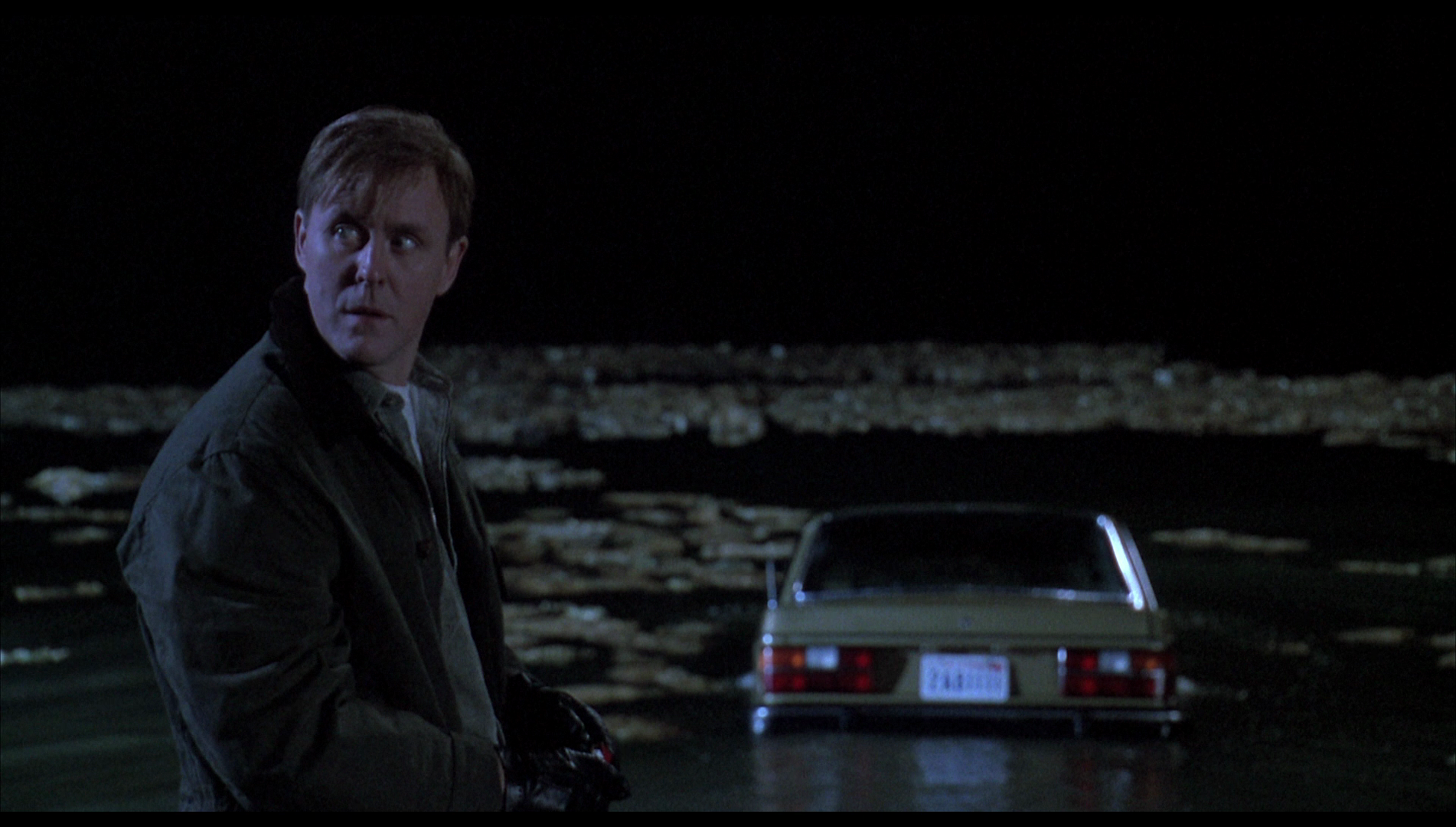 The allusions come thick and fast; at the climax of the film, via a scene in which one of the characters – the film’s antagonist – pushes a pram, causing a child to almost come to harm, De Palma provides the second overt reference within his films to the Odessa Steps sequence of Sergei Eisenstein’s Battleship Potemkin (1925). This, of course, follows the nod to the Odessa Steps sequence within the Union Station shootout in De Palma’s earlier film The Untouchables (1987). However, John Biguenet has argued that these two De Palma films reference the same moment from Eisenstein’s picture to very different ends. In Raising Cain the effect of the allusion to Battleship Potemkin is ‘problematic’: ‘[d]etached from its original context and treated more as parody than as allusion, the baby carriage ceases to resonate as a symbol of society in jeopardy’ (Biguenet, 1998: 138). Biguenet suggests that in Raising Cain, De Palma’s ‘clumsy, self-conscious handling of’ this moment of allusion actually works to ‘destroy the suspense of the film’s climax’ (ibid.). The fact that the film’s antagonist moves the pram ‘not down stairs but on an elevator’ may be taken as ‘a kind of in-joke for cineastes’ (ibid.). Biguenet argues that the use of an allusion to the same film in two of De Palma’s pictures suggests a profound dualism within De Palma’s technique: where in The Untouchables the nod to Battleship Potemkin is ‘knit seamlessly into the fabric of a new film’ and thereby ‘evokes a context that enriches the film’, in Raising Cain the allusion to the Eisenstein film ‘is merely a wink and a nod to knowledgeable viewers’ and therefore ‘undercut[s] the narrative line of the film through the self-consciousness of the device’ (ibid.). Framed in this way, for Biguenet the use of allusions within Raising Cain becomes ‘[a]t its worst, […] a condescending gesture on the part of the director to acknowledge that he or she is superior to the material being presented: it becomes a snide joke for the elite’ (ibid.). The allusions come thick and fast; at the climax of the film, via a scene in which one of the characters – the film’s antagonist – pushes a pram, causing a child to almost come to harm, De Palma provides the second overt reference within his films to the Odessa Steps sequence of Sergei Eisenstein’s Battleship Potemkin (1925). This, of course, follows the nod to the Odessa Steps sequence within the Union Station shootout in De Palma’s earlier film The Untouchables (1987). However, John Biguenet has argued that these two De Palma films reference the same moment from Eisenstein’s picture to very different ends. In Raising Cain the effect of the allusion to Battleship Potemkin is ‘problematic’: ‘[d]etached from its original context and treated more as parody than as allusion, the baby carriage ceases to resonate as a symbol of society in jeopardy’ (Biguenet, 1998: 138). Biguenet suggests that in Raising Cain, De Palma’s ‘clumsy, self-conscious handling of’ this moment of allusion actually works to ‘destroy the suspense of the film’s climax’ (ibid.). The fact that the film’s antagonist moves the pram ‘not down stairs but on an elevator’ may be taken as ‘a kind of in-joke for cineastes’ (ibid.). Biguenet argues that the use of an allusion to the same film in two of De Palma’s pictures suggests a profound dualism within De Palma’s technique: where in The Untouchables the nod to Battleship Potemkin is ‘knit seamlessly into the fabric of a new film’ and thereby ‘evokes a context that enriches the film’, in Raising Cain the allusion to the Eisenstein film ‘is merely a wink and a nod to knowledgeable viewers’ and therefore ‘undercut[s] the narrative line of the film through the self-consciousness of the device’ (ibid.). Framed in this way, for Biguenet the use of allusions within Raising Cain becomes ‘[a]t its worst, […] a condescending gesture on the part of the director to acknowledge that he or she is superior to the material being presented: it becomes a snide joke for the elite’ (ibid.).
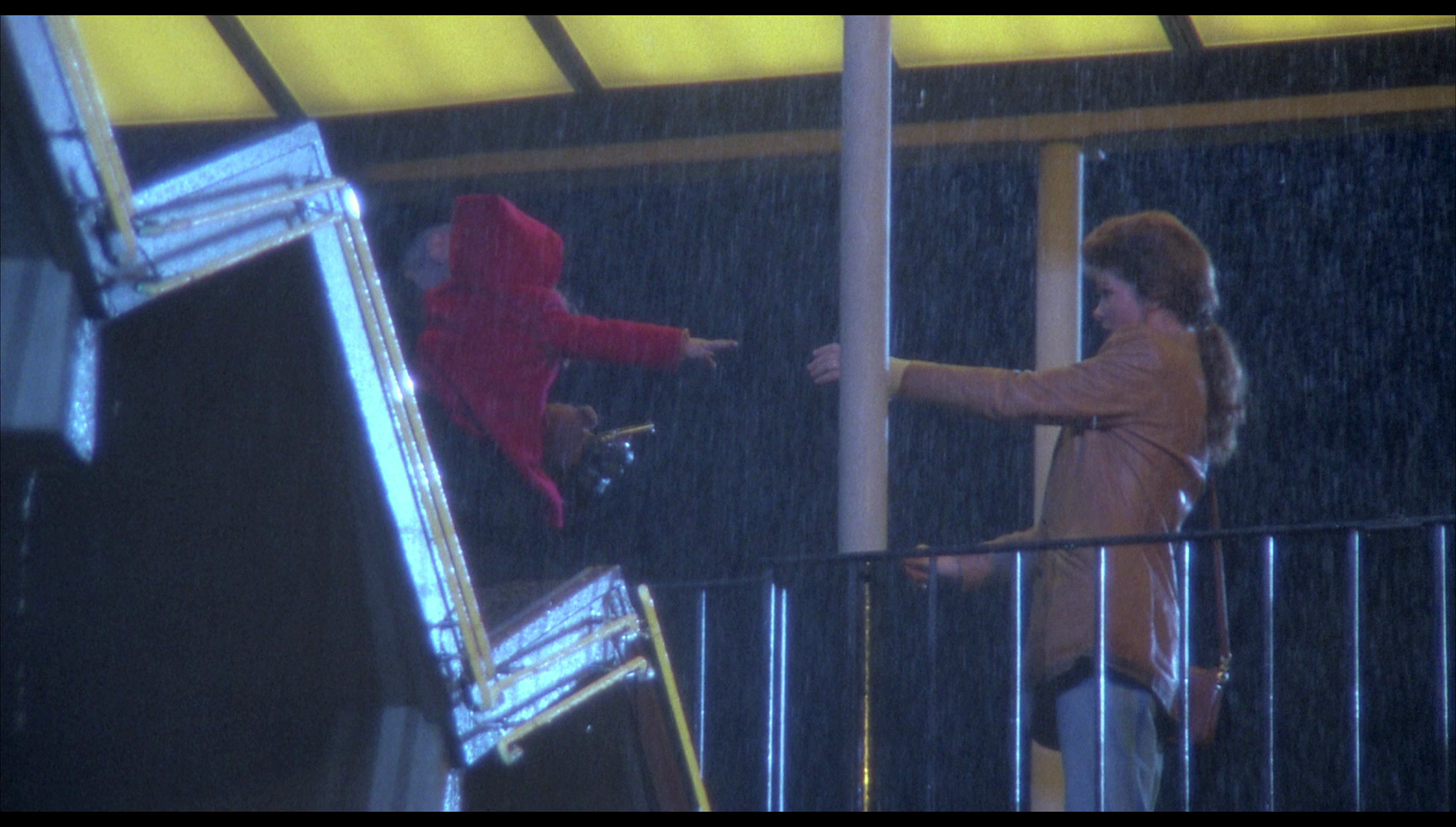 Writing at the time of the film’s original release, Peter Keough highlights how the excesses of Raising Cain led some of the audience at its preview screenings to interpret the film as ‘a deliberate—and hilarious—self-parody’ (Keough, 1992: 129). Although this may have been an aberrant reading, Keough suggests that it became ‘the line that De Palma and the marketing people have taken as well’ (ibid.). Where the film was originally promoted as a more conventional thriller, with press materials foregrounding the film’s status as a ‘romantic suspense thriller’ and a ‘return to a genre made popular by Hollywood classics’, following the preview screening the picture was sold as ‘a devilishly funny film which combines wry humour with shocks and thrills’ (original press materials, quoted in ibid.). Writing at the time of the film’s original release, Peter Keough highlights how the excesses of Raising Cain led some of the audience at its preview screenings to interpret the film as ‘a deliberate—and hilarious—self-parody’ (Keough, 1992: 129). Although this may have been an aberrant reading, Keough suggests that it became ‘the line that De Palma and the marketing people have taken as well’ (ibid.). Where the film was originally promoted as a more conventional thriller, with press materials foregrounding the film’s status as a ‘romantic suspense thriller’ and a ‘return to a genre made popular by Hollywood classics’, following the preview screening the picture was sold as ‘a devilishly funny film which combines wry humour with shocks and thrills’ (original press materials, quoted in ibid.).
De Palma’s films have often been criticised for the aestheticisation of violence – especially violence committed against women, in an era in which the depiction of women as victims was being subverted by the likes of the slasher films, with their emphasis on the ‘Final Girl’ archetype, that were popular throughout the 1980s. Raising Cain is no exception, with the film’s victims being wholly female. Commenting on this trend, De Palma once asserted that ‘I put women in jeopardy because I think they are more vulnerable. It became very unfashionable in the 80s to put a woman in jeopardy. You were immediately accused of being sexist, so that went out of the genre. Now you put men and machines in jeopardy, or children’ (De Palma, quoted in Keough, op cit.: 130). 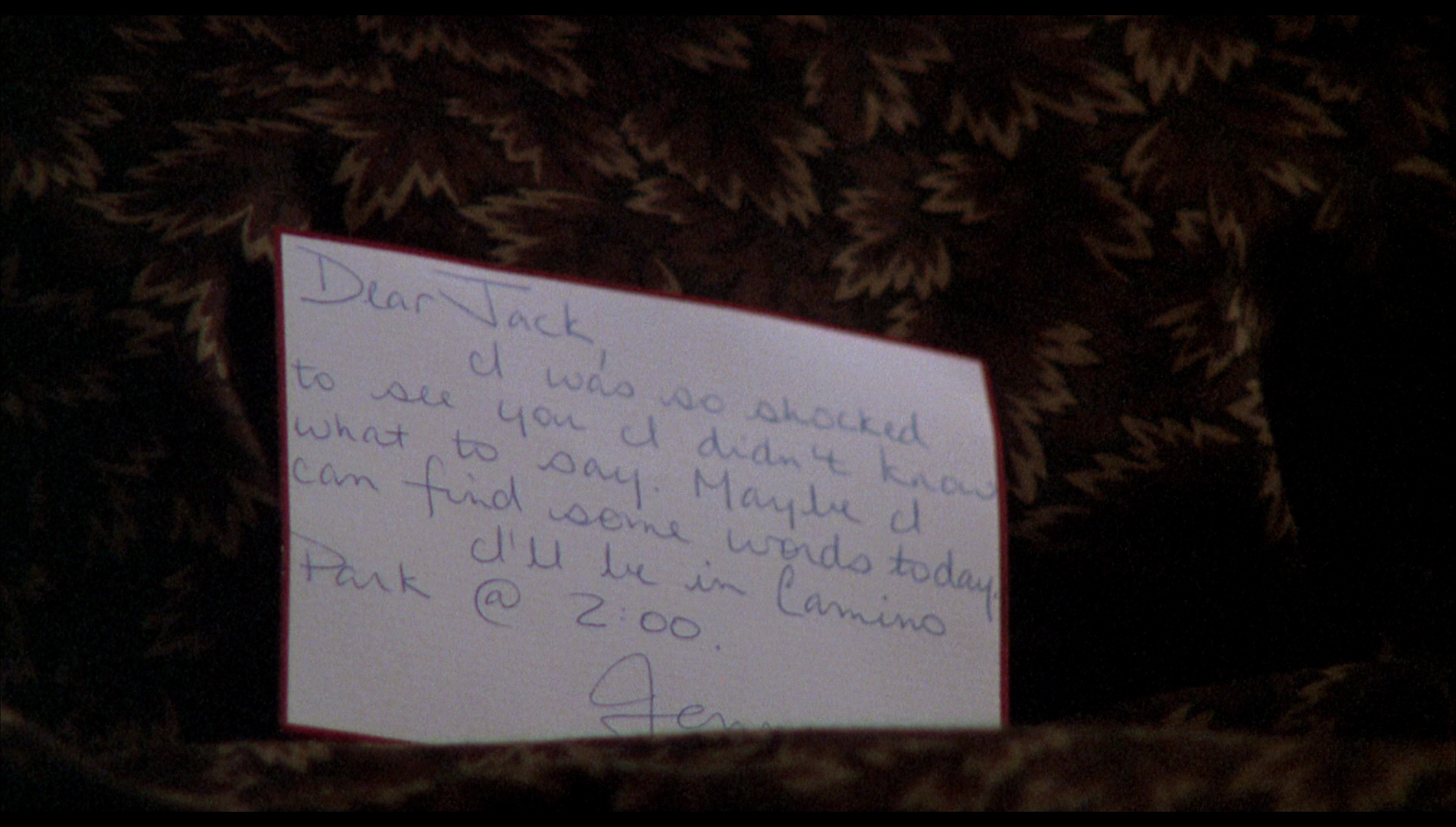 The motif of the double appears in a number of De Palma’s films, from Sisters to Obsession and Femme Fatale. The theme of multiple identities – and the performativity of identity – is an even more frequent theme in De Palma’s cinema. As M Keith Booker has observed, the emphasis in De Palma’s Body Double (1986) on issues of mistaken identity and disguise ‘call[s] attention to the artificiality and instability of all identities in the postmodern era, a motif on which Raising Cain builds quite directly’ (Booker, 2007: 133). Most obviously Raising Cain explores this theme of doubling via the multiple roles played by John Lithgow, each of which represents a different aspect to Carter Nix’s personality. Embodying a number of different characters – different personalities that exist within Carter Nix – Lithgow dons disguises only inasmuch as he employs different facial expressions and non-verbal cues for each of these characters: Carter is meek and quiet; Cain scowls and leers. At the end of the film, Carter retreats into the personality of Margo, and Lithgow is placed in drag in a sequence which recalls both the climax of De Palma’s own Dressed to Kill (in which Michael Caine appears in drag) and Lithgow’s prior role as the transsexual football player Roberta Muldoon in George Roy Hill’s The World According to Garp (1982). However, doubling is also evident in the film’s approach to narrative, the story of Carter and his abduction of the children being placed in contrast with the story of Jenny and her affair with Jack. The first half hour of the film is focalised through Carter/Cain as the plot involving the abduction of children for Dr Nix’s experiments is established; the next half hour or so is presented from the perspective of Jenny, complete with voiceover narration by this character, as she reflects on her affair with Jack and tries to cover up her liaison with him. The motif of the double appears in a number of De Palma’s films, from Sisters to Obsession and Femme Fatale. The theme of multiple identities – and the performativity of identity – is an even more frequent theme in De Palma’s cinema. As M Keith Booker has observed, the emphasis in De Palma’s Body Double (1986) on issues of mistaken identity and disguise ‘call[s] attention to the artificiality and instability of all identities in the postmodern era, a motif on which Raising Cain builds quite directly’ (Booker, 2007: 133). Most obviously Raising Cain explores this theme of doubling via the multiple roles played by John Lithgow, each of which represents a different aspect to Carter Nix’s personality. Embodying a number of different characters – different personalities that exist within Carter Nix – Lithgow dons disguises only inasmuch as he employs different facial expressions and non-verbal cues for each of these characters: Carter is meek and quiet; Cain scowls and leers. At the end of the film, Carter retreats into the personality of Margo, and Lithgow is placed in drag in a sequence which recalls both the climax of De Palma’s own Dressed to Kill (in which Michael Caine appears in drag) and Lithgow’s prior role as the transsexual football player Roberta Muldoon in George Roy Hill’s The World According to Garp (1982). However, doubling is also evident in the film’s approach to narrative, the story of Carter and his abduction of the children being placed in contrast with the story of Jenny and her affair with Jack. The first half hour of the film is focalised through Carter/Cain as the plot involving the abduction of children for Dr Nix’s experiments is established; the next half hour or so is presented from the perspective of Jenny, complete with voiceover narration by this character, as she reflects on her affair with Jack and tries to cover up her liaison with him.
As Peter Keough states, these ‘two stories bounce off one another in a wacky fugue, baroquely ornamented by De Palma’s melodramatic excess’ (Keough, op cit.: 134). De Palma has commented on his tendency to feature parallel narratives in his films, allowing ‘one story [to] collid[e] into another in then most absurdist way’, and suggesting that in Raising Cain ‘[e]ven though those people [Carter and Jenny] are married, they are involved in completely different psychological storylines. One is fantasizing about multiples and twins or perhaps not dead fathers, while the other is off on a fantasy about a lost love’ (De Palma, quoted in ibid.). The point at which these two narratives intersect, when Carter stumbles across Jack and Jenny as they make love in the woods, is what ‘causes all the impending tragedy of the movie’ (De Palma, quoted in ibid.). 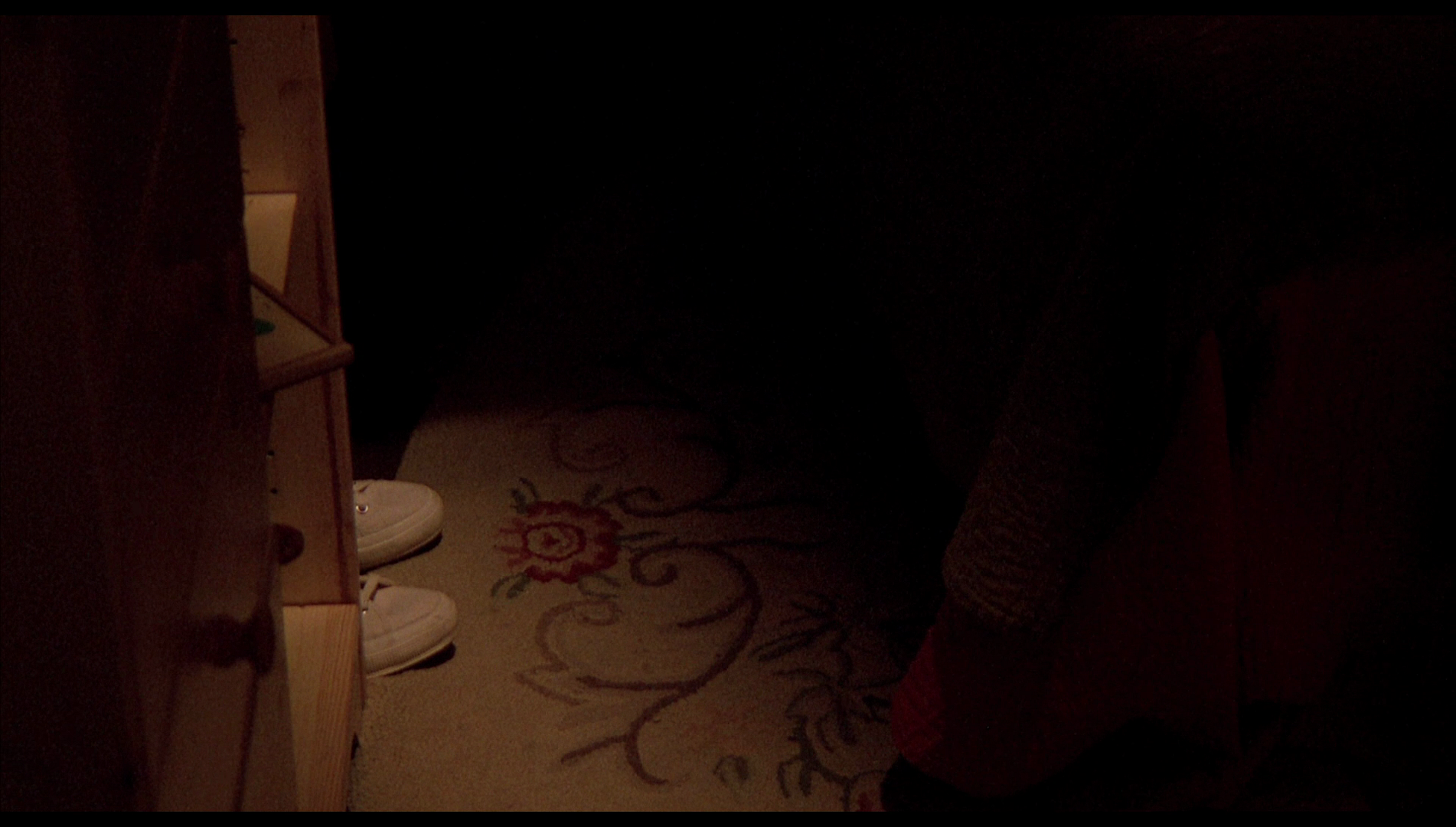 Following the film’s opening titles sequence, the film takes us to Carter meeting with Karen (Teri Austin), another parent at a playground he frequents with Amy. Claiming that Jenny has been held up at the hospital where she works, Carter manages to blag a lift from Karen. During their conversation in Karen’s car, as the children sleep in the back seats, Carter foregrounds his work as a developmental psychologist and his father’s role too: ‘You realise how important these early years are in a child’s development’, he reminds Karen, adding that ‘My father wrote the book on child development. Fortunately, it’s in Norwegian’. The joke falls flat, and Carter continues by telling Karen he is planning to take Amy to his father’s clinic in Oslo where Carter’s father is conducting a study of ‘gifted’ children. Carter asks Karen if she would be interested in letting her son Sam join the group at the clinic, but Karen laughs at the idea, asking ‘How would any sane parent go along with an idea like that?’ Following the film’s opening titles sequence, the film takes us to Carter meeting with Karen (Teri Austin), another parent at a playground he frequents with Amy. Claiming that Jenny has been held up at the hospital where she works, Carter manages to blag a lift from Karen. During their conversation in Karen’s car, as the children sleep in the back seats, Carter foregrounds his work as a developmental psychologist and his father’s role too: ‘You realise how important these early years are in a child’s development’, he reminds Karen, adding that ‘My father wrote the book on child development. Fortunately, it’s in Norwegian’. The joke falls flat, and Carter continues by telling Karen he is planning to take Amy to his father’s clinic in Oslo where Carter’s father is conducting a study of ‘gifted’ children. Carter asks Karen if she would be interested in letting her son Sam join the group at the clinic, but Karen laughs at the idea, asking ‘How would any sane parent go along with an idea like that?’
The film takes a sinister turn, and begins to foreground Carter’s propensity for violence, when Carter lunges at Karen and uses chloroform to subdue her. Cain suddenly appears at the car door. ‘When did you get out?’, Carter says, his words suggesting that he hasn’t encountered Cain for a while – and suggesting to the audience that Cain has been incarcerated somewhere. (Of course, it quickly becomes clear that Cain has been ‘incarcerated’ within Carter and recent events have caused Cain, Carter’s alternate identity, to resurface.) ‘I won’t hurt her’, Carter protests, in reference to Karen. ‘You won’t hurt her; she’ll hurt you’, Cain responds matter-of-factly, then for the first time in the film (but not the last), he quotes Tony Curtis’ famous line from Alexander Mackendrick’s Sweet Smell of Success (1957): ‘The cat’s in the bag, and the bag is in the river’.  From this point onwards, it becomes almost impossible to identify when we see Cain onscreen and when we see Carter; of course, these are two aspects of the same character, but the difference is only distinguishable in subtle aspects of Lithgow’s performance. Carter/Cain returns home and parks Karen’s car, with Sam still in the back and Karen’s body in the boot of the vehicle, in the garage attached to the Nix family home. When Jenny returns home, she and Carter talk and Jenny goes to lay on the bed. A subtle, leering glance from Lithgow tells us that we’re now watching Cain as he ogles Jenny’s bare legs. He climbs into bed with her and begins to caress her; Jenny is surprised at her usually restrained husband’s expression of lust. It’s clear that Jenny develops her affair with Jack owing to Carter’s lack of interest in sex; Jenny and Jack make love with abandon, though Jenny is reminded by her friend Sarah that ‘you are married to the perfect man [Carter]’ but warns Jenny not to ‘do what I would do’ (ie, to fuck Jack). From this point onwards, it becomes almost impossible to identify when we see Cain onscreen and when we see Carter; of course, these are two aspects of the same character, but the difference is only distinguishable in subtle aspects of Lithgow’s performance. Carter/Cain returns home and parks Karen’s car, with Sam still in the back and Karen’s body in the boot of the vehicle, in the garage attached to the Nix family home. When Jenny returns home, she and Carter talk and Jenny goes to lay on the bed. A subtle, leering glance from Lithgow tells us that we’re now watching Cain as he ogles Jenny’s bare legs. He climbs into bed with her and begins to caress her; Jenny is surprised at her usually restrained husband’s expression of lust. It’s clear that Jenny develops her affair with Jack owing to Carter’s lack of interest in sex; Jenny and Jack make love with abandon, though Jenny is reminded by her friend Sarah that ‘you are married to the perfect man [Carter]’ but warns Jenny not to ‘do what I would do’ (ie, to fuck Jack).
The moment of coitus between Jenny and Cain/Carter is interrupted before it can build up a sense of momentum, when the pair hear the screaming of a child Jenny believes to be Amy – but which is in fact Sam, who has woken to find himself trapped in the back seat of the car. Carter/Cain leaves Jenny, ostensible to take care of Amy but really to drive Sam to the motel where Carter has been taking the children he has abducted for Dr Nix’s experiments. There, Cain converses with Dr Nix, who is also played by Lithgow. ‘I was afraid of this’, Dr Nix says upon seeing Carter, ‘I didn’t want you to help him’. Dr Nix adds, ‘You should never have gotten out. You’re nothing but a cheap hoodlum’. ‘I am what you made me, dad’, Cain responds sarcastically, ‘I’m that fucked-up experiment of yours that won’t go away’. 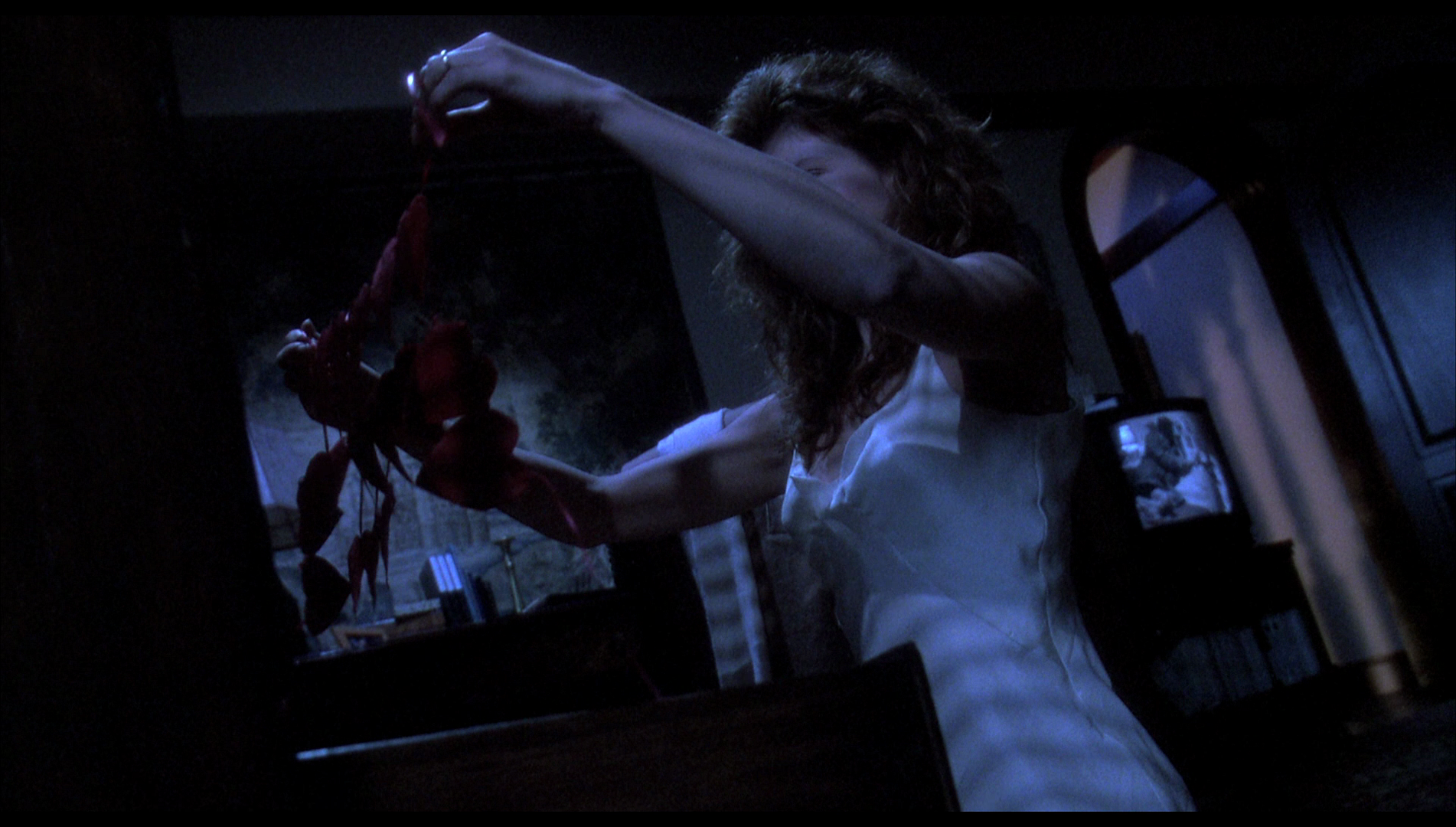 Similarly, the film’s other sex scene comes to an abrupt end when the couple (Jenny and, this time, Jack) are interrupted: when Jenny and Jack begin to make passionate love in a secluded spot in the park, they are interrupted when Jenny catches a glimpse of someone in the distance. This someone is, of course, Carter, who unbeknownst to Jenny and Jack is placing the knife he has used to kill the babysitter in Jack’s coat pocket, with the intention of framing Jack for the murder. (Jack’s coat is hanging from a branch of a nearby tree.) However, the audience is given a jarring shock when De Palma suddenly cuts to a shot of Jenny in bed, waking up with a start as if from a nightmare. We are momentarily left to wonder whether Jenny’s tryst with Jack was ‘real’ or simply a dream. Similarly, the film’s other sex scene comes to an abrupt end when the couple (Jenny and, this time, Jack) are interrupted: when Jenny and Jack begin to make passionate love in a secluded spot in the park, they are interrupted when Jenny catches a glimpse of someone in the distance. This someone is, of course, Carter, who unbeknownst to Jenny and Jack is placing the knife he has used to kill the babysitter in Jack’s coat pocket, with the intention of framing Jack for the murder. (Jack’s coat is hanging from a branch of a nearby tree.) However, the audience is given a jarring shock when De Palma suddenly cuts to a shot of Jenny in bed, waking up with a start as if from a nightmare. We are momentarily left to wonder whether Jenny’s tryst with Jack was ‘real’ or simply a dream.
Jenny gets out of bed; it’s the middle of the night. Realising she has accidentally given the gift she bought for Carter to Jack, Jenny sneaks out of the house and into Jack’s hotel room, to which she has a key. However, she is interrupted by Jack, who is still awake; he kisses her, and again De Palma cuts to a shot of Jenny waking up abruptly – this time in the morning, and in Jack’s hotel room, with Jack asleep on her lap. ‘Oh my God!’, Jenny exclaims in horror at the realisation that she has spent the night away from her home. Jenny receives a telephone call from Sarah, in which Sarah tells Jenny that Carter is desperately looking for her. Jenny races home in her car, but in slow-motion she crashes it into a statue, the spear carried by the figure in the statue piercing her chest… That is, until Jenny wakes up again – this time at home, in her own bed, and at night. De Palma’s use of this device, presenting the audience with three scenarios from which Jenny wakes up with a start, seems intended to allude to Luis Bunuel’s use of a similar technique in The Discreet Charm of the Bourgeoisie (1971). As in Bunuel’s application of this narrative device, by presenting Jenny as waking from three separate scenarios De Palma destabilises the audience’s interpretation of what they are seeing, blurring the distinction between the waking world and the world of dream to the extent that we – and perhaps Jenny – are unsure which is which, with one bleeding into the other. This has the effect that, when Jenny begins to talk to Carter and Carter (or, rather, Cain) suddenly begins to smother Jenny with a pillow, we are unsure whether or not we are watching another of Jenny’s nightmares and may very well expect De Palma to cut once again to a shot of Jenny waking from a dream. But he does not. This destablising of perspective, via the construction of the narrative (and foregrounded in the use of the narrative device of Jenny waking up from a dream several times in quick succession) and in having Lithgow play several characters (all of whom are different personalities housed within Carter), is perhaps the film’s ‘great project’. Like many of De Palma’s films, Raising Cain is arguably a film about perception and the fact that what you see isn’t necessarily what you get.
Video
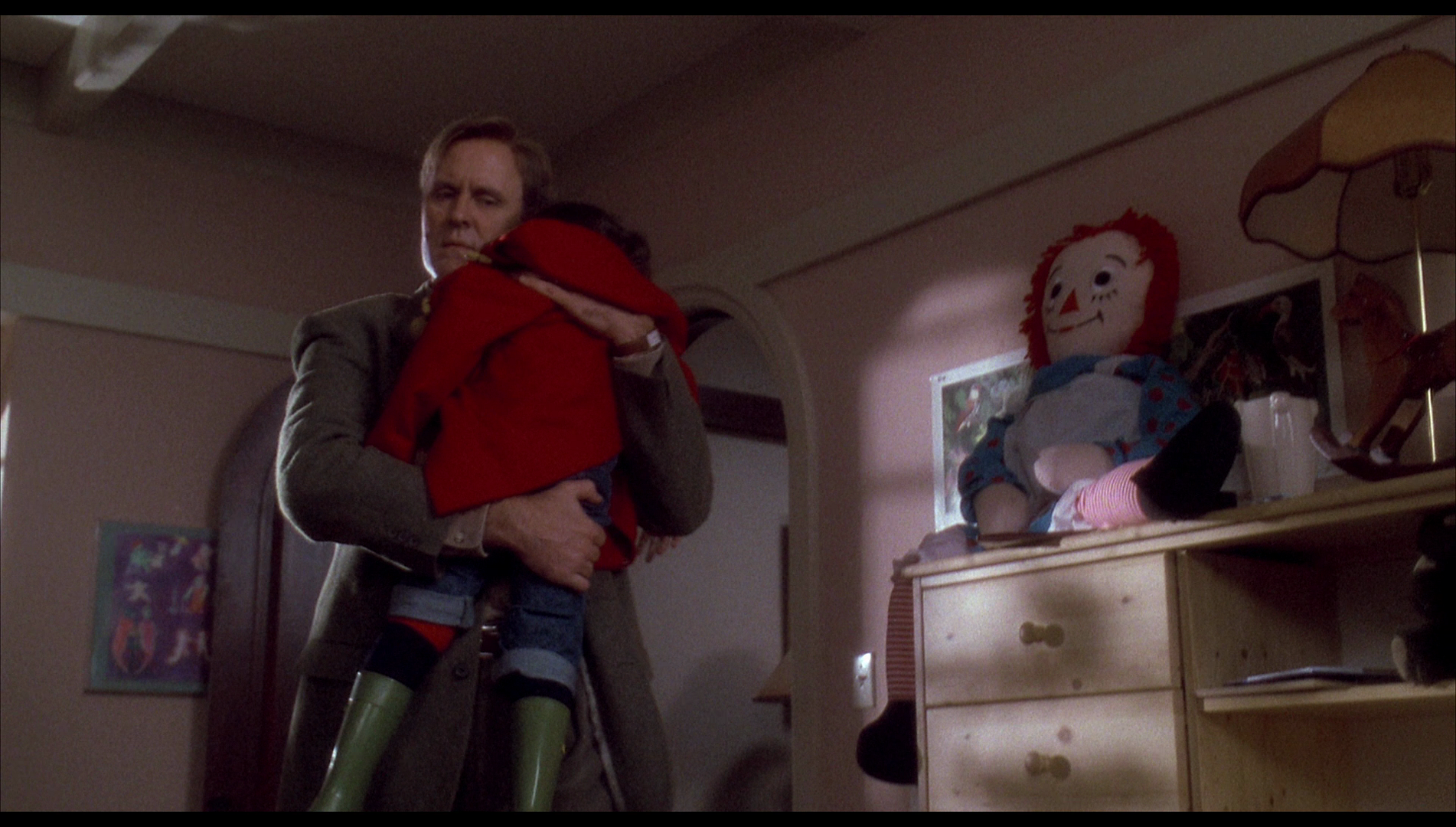 Taking up approximately 21Gb of space on its disc, this 1080p presentation of Raising Cain uses the AVC codec. The film is in its original aspect ratio of 1.85:1. The picture is uncut, with a running time of 91:36 mins. It’s not the most excitingly photographed film, with focal lengths predominantly within the standard range – though much use (overuse, some might say) of canted angles: the exception to the film’s dominant use of standard focal lengths comes when the film introduces Dr Nix, who is shot with a wide-angle lens that evidences strong barrel distortion – giving Dr Nix and the motel room in which he is introduced a nightmarish quality. Colour reproduction is excellent: this is evident, for example, in the film’s opening sequence, in which the vibrant red of Amy’s coat (clearly a reference to the iconic coat used in Nicolas Roeg’s Don’t Look Now, 1973) is offset by the lush greens of the trees that border the playground. Fine detail is evident throughout the film, offering a very pleasing step up from the film’s previous DVD releases. Contrast levels are very well-balanced, with deep, rich blacks and defined mid-tones. As in many of his other films, De Palma favours strong depth of field within the imagery, to the extent that he uses split-dioptre lenses to achieve this. This presentation communicates that sense of depth within the original photography superbly. Damage is limited to some very minor flecks and specks; an excellent encode ensures the presentation retains the structure of 35mm film, and there is no evidence of harmful digital tinkering. Taking up approximately 21Gb of space on its disc, this 1080p presentation of Raising Cain uses the AVC codec. The film is in its original aspect ratio of 1.85:1. The picture is uncut, with a running time of 91:36 mins. It’s not the most excitingly photographed film, with focal lengths predominantly within the standard range – though much use (overuse, some might say) of canted angles: the exception to the film’s dominant use of standard focal lengths comes when the film introduces Dr Nix, who is shot with a wide-angle lens that evidences strong barrel distortion – giving Dr Nix and the motel room in which he is introduced a nightmarish quality. Colour reproduction is excellent: this is evident, for example, in the film’s opening sequence, in which the vibrant red of Amy’s coat (clearly a reference to the iconic coat used in Nicolas Roeg’s Don’t Look Now, 1973) is offset by the lush greens of the trees that border the playground. Fine detail is evident throughout the film, offering a very pleasing step up from the film’s previous DVD releases. Contrast levels are very well-balanced, with deep, rich blacks and defined mid-tones. As in many of his other films, De Palma favours strong depth of field within the imagery, to the extent that he uses split-dioptre lenses to achieve this. This presentation communicates that sense of depth within the original photography superbly. Damage is limited to some very minor flecks and specks; an excellent encode ensures the presentation retains the structure of 35mm film, and there is no evidence of harmful digital tinkering.
Audio
Audio is presented via a LPCM 2.0 stereo track. This is crisp and resonant, from the music box lullaby that opens the film onwards. Optional English subtitles for the Hard of Hearing are provided. These are accurate and easy to read.
Extras
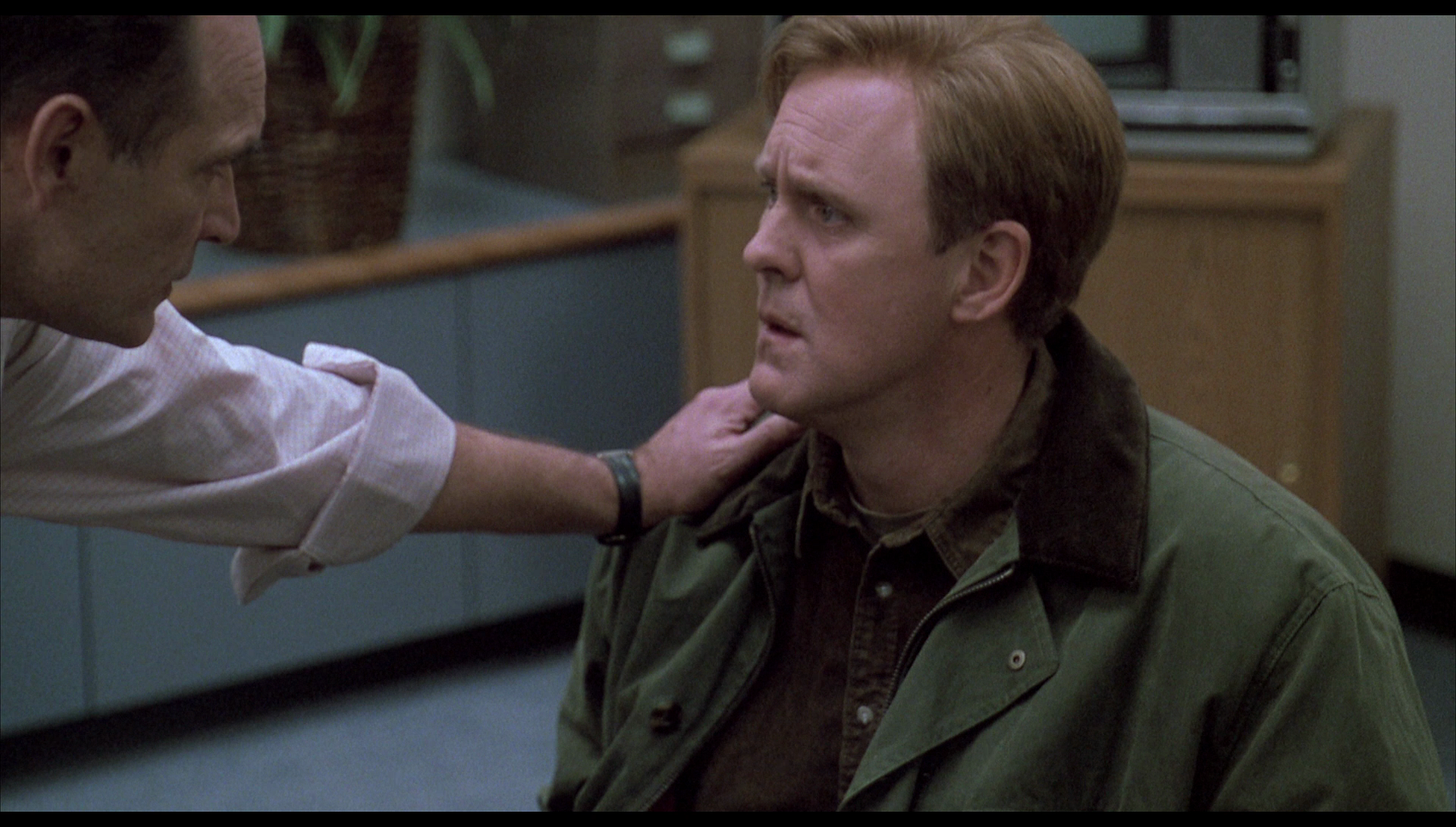 DISC ONE: DISC ONE:
* The Film - ‘Hickory Dickory Doc’ (15:45). In a new interview, John Lithgow reflects on his friendship with De Palma and the three films on which they collaborated. Lithgow suggests De Palma sees him as a ‘blank slate’ which ‘can go anywhere’ within the context of a film. Lithgow discusses his original response to the script and the production of the film too. - ‘The Man in My Life’ (24:00). Steven Bauer discusses his responses to De Palma’s films and how this changed after Bauer worked with De Palma on Scarface. Bauer talks about how he felt upon reading the script for Raising Cain and the joy he felt when shooting the picture, which he describes as ‘a vacation from my life’. - ‘Three Faces of Cain’ (15:47). Another De Palma collaborator, Gregg Henry, discusses his role in the film as one of the detectives. He talks about the experience of making the film, and reveals that he stood in for Lithgow in scenes in which Lithgow had to act against one of Carter’s alternate personalities. He praises De Palma’s ‘focused and intense’ approach to filmmaking. - ‘The Cat’s in the Bag’ (8:00). Tom Bower, who plays another of the detectives, talks about the film. He praises De Palma’s technique in generating suspense and compares the director with Hitchcock. - ‘A Little Too Late for That’ (8:43). Mel Harris reflects on her performance as Jenny’s friend Sarah. She discusses how she came to be involved in the film after reading the script in a single sitting. She singles out Lithgow’s performance/s for praise. She also talks about the photography within the film and how expressive it is. - ‘Have You Talked to the Others?’ (10:48). Paul Hirsch, the film’s editor, comments on the ways in which suspense is generated within the picture. Hirsch talks about how he came to be involved in the editing of the film, following De Palma’s unsuccessful attempts to assemble the picture with the help of another editor. Hirsch says that when he first looked at the script and examined the footage, he found the narrative confusing. He says that editing is about ‘pace and clarity’, and working on Raising Cain, achieving both was difficult. He also reflects on the similarities between De Palma and Hitchcock. - ‘Raising Pino’ (35:46). Composer Pino Donaggio discusses his career before focusing on his work for De Palma. He discusses De Palma’s approach to the use of music in his films and compares De Palma’s use of music with that of Dario Argento, for whom Donaggio has scored a number of films. This interview is in Italian, with optional English subtitles. - ‘Father’s Day’ (23:26). This video essay by Chris Dumas, who has written a book about De Palma, focuses on the relationships between the final cut of the film and its script. Dumas reflects on the ‘re-cut’ of Raising Cain by fan of the film, Peet Gelderblom. Dumas discusses the differences in structure between the script and the completed film in significant detail. - Gallery (2:00). - Trailer (2:05). 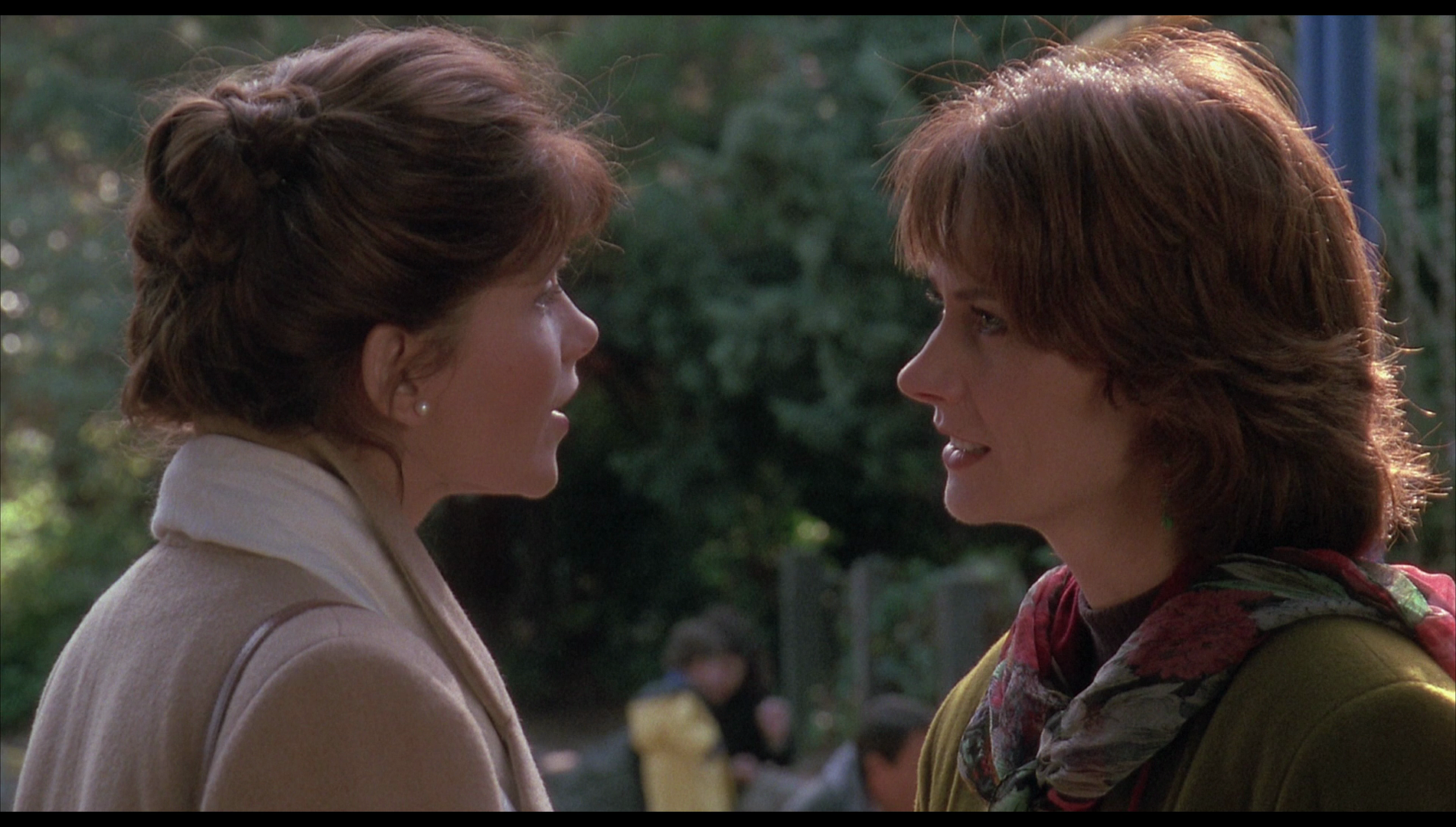 DISC TWO: DISC TWO:
- Raising Cain: The Director’s Cut (91:58). In 2012, filmmaker and fan of Raising Cain Peet Gelderblom assembled an alternate edit of the film, a ‘fan edit’, using the film’s shooting script as his guide. Ths edit of the film acquired legitimacy when De Palma praised Gelderblom’s work and argued that Gelderblom’s edit could be considered a ‘director’s cut’ This re-edit of the film pushes Jenny’s story to the front, allowing Jenny to direct the first half hour or so of the film before transitioning to Carter’s point-of-view. Following the opening credits, this version of the film begins with Jenny meeting Jack whilst purchasing a Valentine’s Day gift for Carter; Carter’s murder of Karen, and the introduction of Cain, takes place much later in the narrative now. The reordering of this narrative information introduces some interesting differences: by positioning the scene in which Jenny buys a present for Carter at the start of the picture, this edit of the film also introduces Carter’s assertion that ‘Amy needs to spend more time with her mommy – more quality time’ right at the opening of the picture; the line is followed closely by Jenny’s decision to abandon Carter and Amy in order to deliver her present for Jack to his hotel room. All of this makes Jenny’s later criticism of Carter’s decision to take leave from his work to raise their daughter seem even more hypocritical than it does in the theatrical edit (in which by the time this line appears, the audience has already seen Carter murder Karen). This edit also makes Carter seem more enigmatic as a character: we only see glimpses of him in the film’s opening sequences, his early appearances focalised through Jenny. The moment when Carter smothers Jenny with a pillow, which in the theatrical edit takes place a long time after we have already seen Carter murder Karen, therefore comes out of left-field and is much more shocking. I’m not entirely convinced this is a ‘better’ cut of the film than the theatrical edit; the theatrical edit arguably generates a stronger amount of irony and suspense with regards Jenny’s relationship with Carter, owing to the fact that the opening sequences establish both Carter’s potential for violence and the underlying threat of Cain’s presence. However, this is certainly an interesting alternate edit of the film and one that fans of the picture will find fascinating to watch and compare with the version of the film within which they are already familiar. - ‘Changing Cain: Brian De Palma’s Cult Classic Restored’ (2:25). Here, Peet Gelderblom introduces his cut of Raising Cain and talks about De Palma’s endorsement of it. - ‘Raising Cain Re-Cut’ (13:02). In this video essay, Gelderblom discusses the changes he made to the theatrical cut of the film, commenting on the motivation behind these changes, and reflects on the impact of these changes on the film’s narrative.
Overall
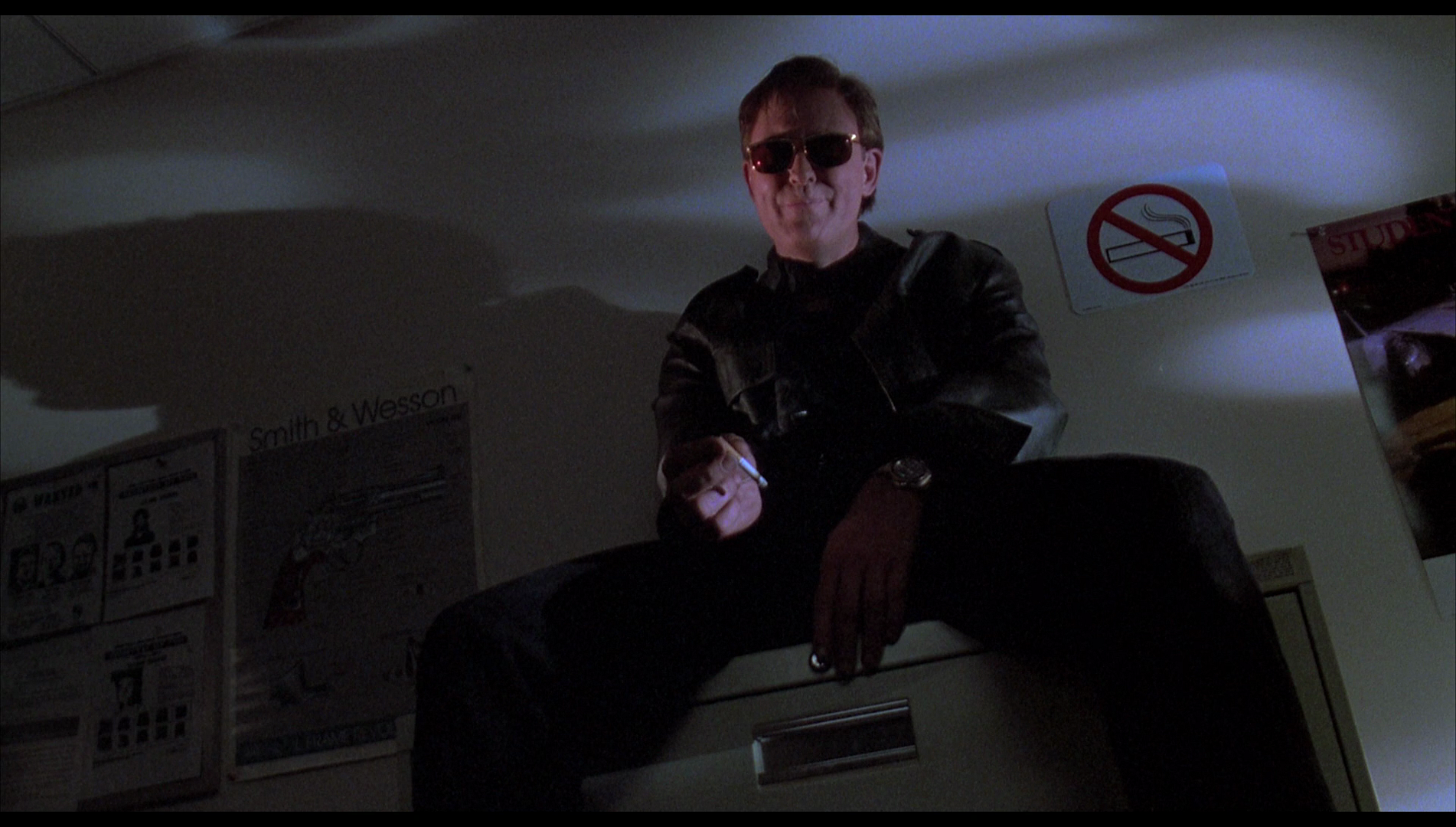 A divisive film, Raising Cain probably has an equal number of fans and detractors, with some arguing that the picture is De Palma’s masterpiece and others seeing it as a misstep in the career of the director. Following Raising Cain, De Palma’s career took a rather different turn, and for a number of years De Palma avoided the thriller genre and retrenched into the more conventional Hollywood paradigms of his earlier films Scarface (1983) and The Untouchables (1987) – making films like Mission: Impossible (1996), Snake Eyes (1998) and Mission to Mars (1990). These films seemed intent on courting a different audience to De Palma’s thrillers, though De Palma returned to the world of the Hitchcockian thriller with Femme Fatale in 2002. A divisive film, Raising Cain probably has an equal number of fans and detractors, with some arguing that the picture is De Palma’s masterpiece and others seeing it as a misstep in the career of the director. Following Raising Cain, De Palma’s career took a rather different turn, and for a number of years De Palma avoided the thriller genre and retrenched into the more conventional Hollywood paradigms of his earlier films Scarface (1983) and The Untouchables (1987) – making films like Mission: Impossible (1996), Snake Eyes (1998) and Mission to Mars (1990). These films seemed intent on courting a different audience to De Palma’s thrillers, though De Palma returned to the world of the Hitchcockian thriller with Femme Fatale in 2002.
Seen today and with the benefit of hindsight, Raising Cain is a fascinating thriller, its narrative challenges seeming very apt in a decade in which Hollywood films began to challenge the dominant paradigms of storytelling (in pictures such as Quentin Tarantino’s Pulp Fiction, 1994, and Christopher Nolan’s Memento, 2000). Certainly, the very fact that the film looks for its chief inspiration towards the two iconic thrillers of 1960 – Hitchcock’s lauded Psycho and Michael Powell’s derided Peeping Tom – underscores how postmodern and ‘meta’ Raising Cain is, though it doesn’t quite go to the same lengths as the bizarrely (and, some would say, distractingly) reflexive final scene of De Palma’s earlier Body Double (1986). Arrow’s Blu-ray presentation of the film is excellent, offering a huge improvement over the film’s previous DVD releases. The excellent presentation of the main feature is supported by some equally excellent contextual material. The interviews included on the first disc are thorough and fascinating throughout, and the inclusion of Peet Gelderblom’s re-edit of the film on disc two (which is included only in the first 3000 copies of this release), along with an explanation of the differences between this cut and the theatrical edit, is superb. For fans of the director, this release is unmissable and continues Arrow’s run of impressive releases of De Palma pictures. References: Booker, M Keith, 2007: Postmodern Hollywood: What’s New In Film and Why It Makes Us Feel So Strange. London: Praeger Publishers Leitch, Thomas M, 2002: ‘The Hitchcock Moment’. In: Gottlieb, Sidney & Brookhouse, Christopher (eds), 2002: Framing Hitchcock: Selected Essays From ‘The Hitchcock Annual’. Wayne State University Press: 180-98 Keough, Peter, 1992: ‘Out of the Ashes’. In: Knapp, Lawrence P, 2003: Brian De Palma: Interviews. University Press of Mississippi: 129-34 Biguenet, John, 1998: ‘Double Takes: The Role of Allusion in Cinema’. In: Horton, Andrew & McDougal, Stuart Y (eds), 1998: Play It Again, Sam: Retakes on Remakes. University of California Press: 131-46 
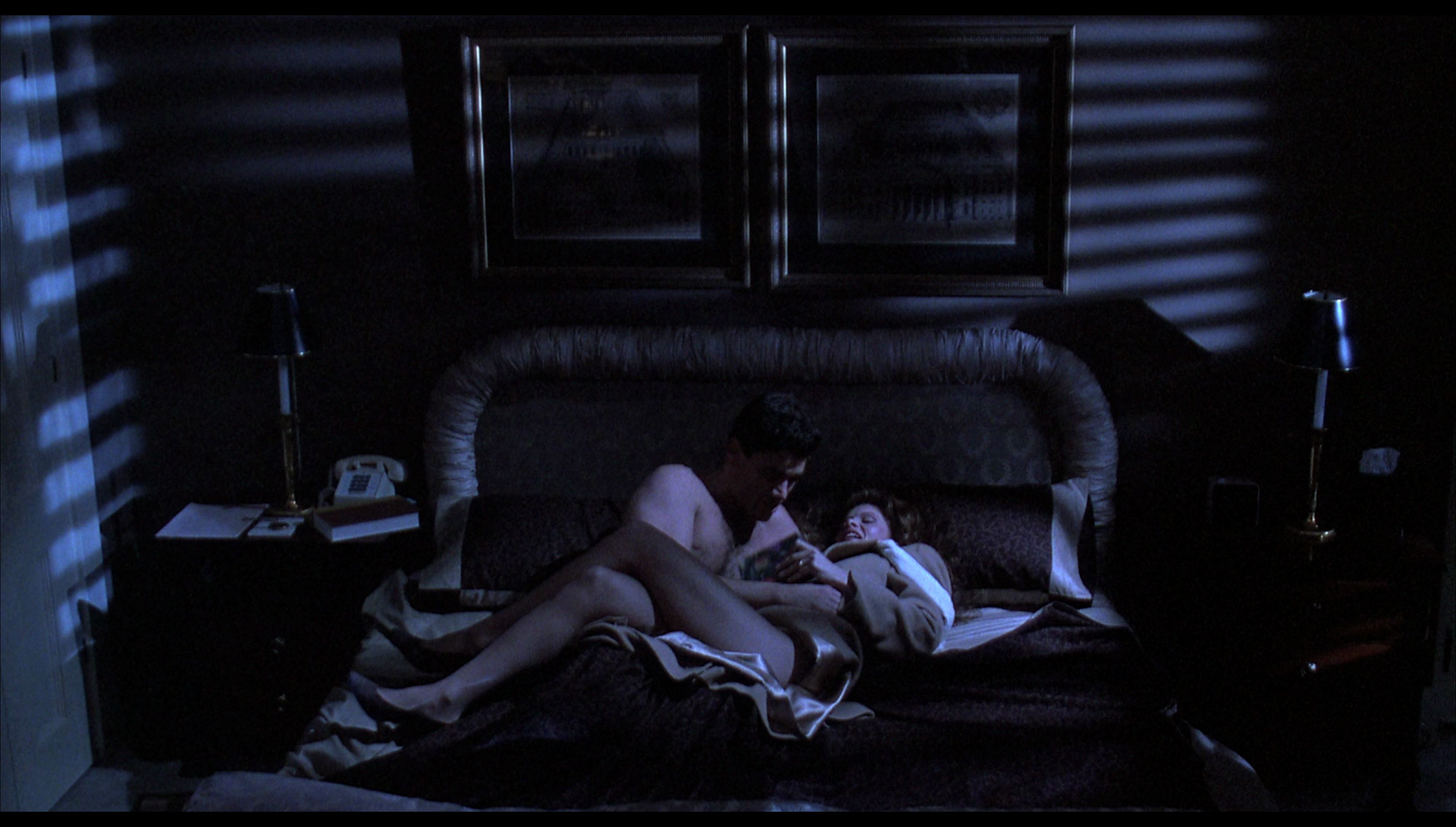

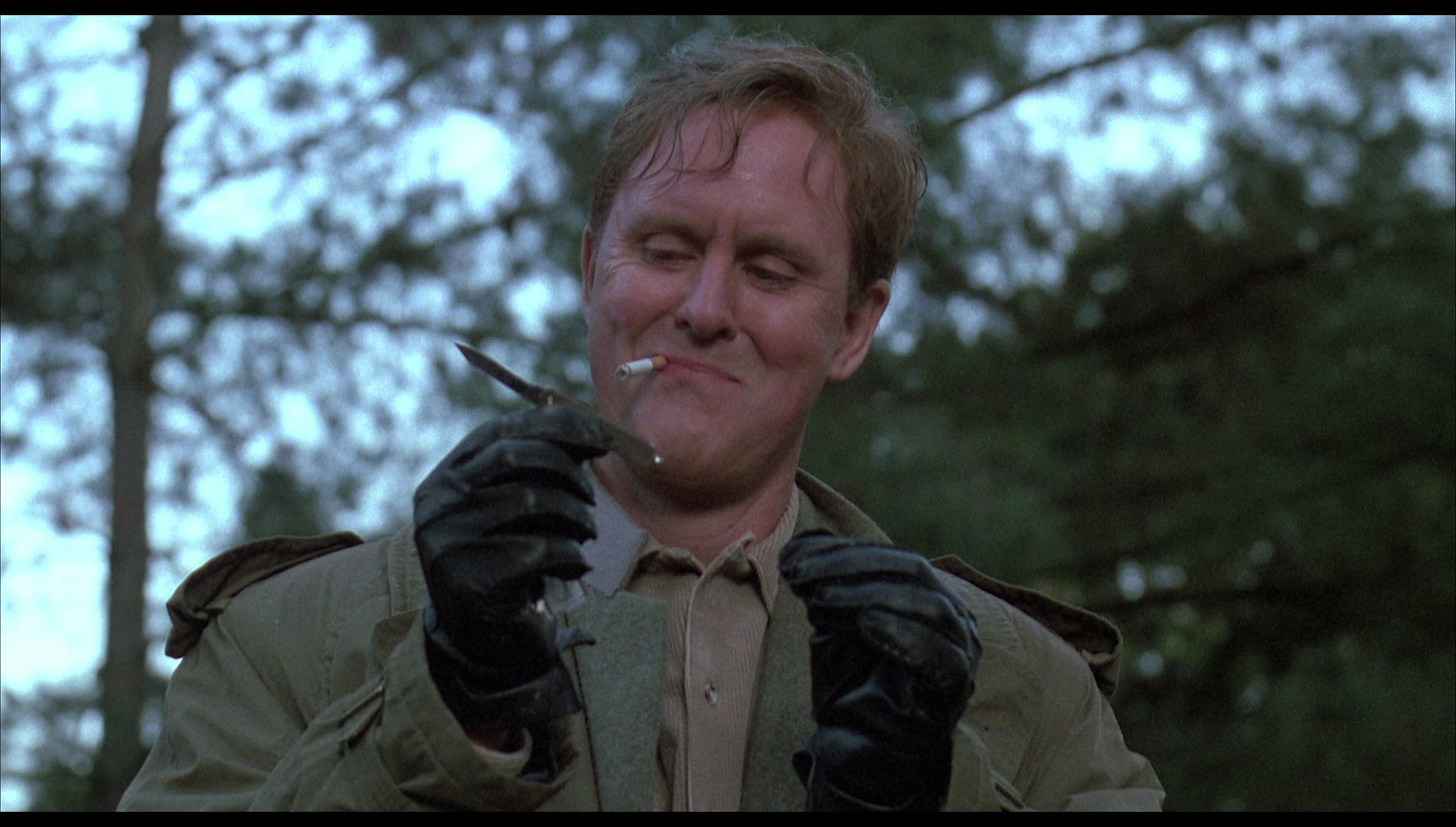
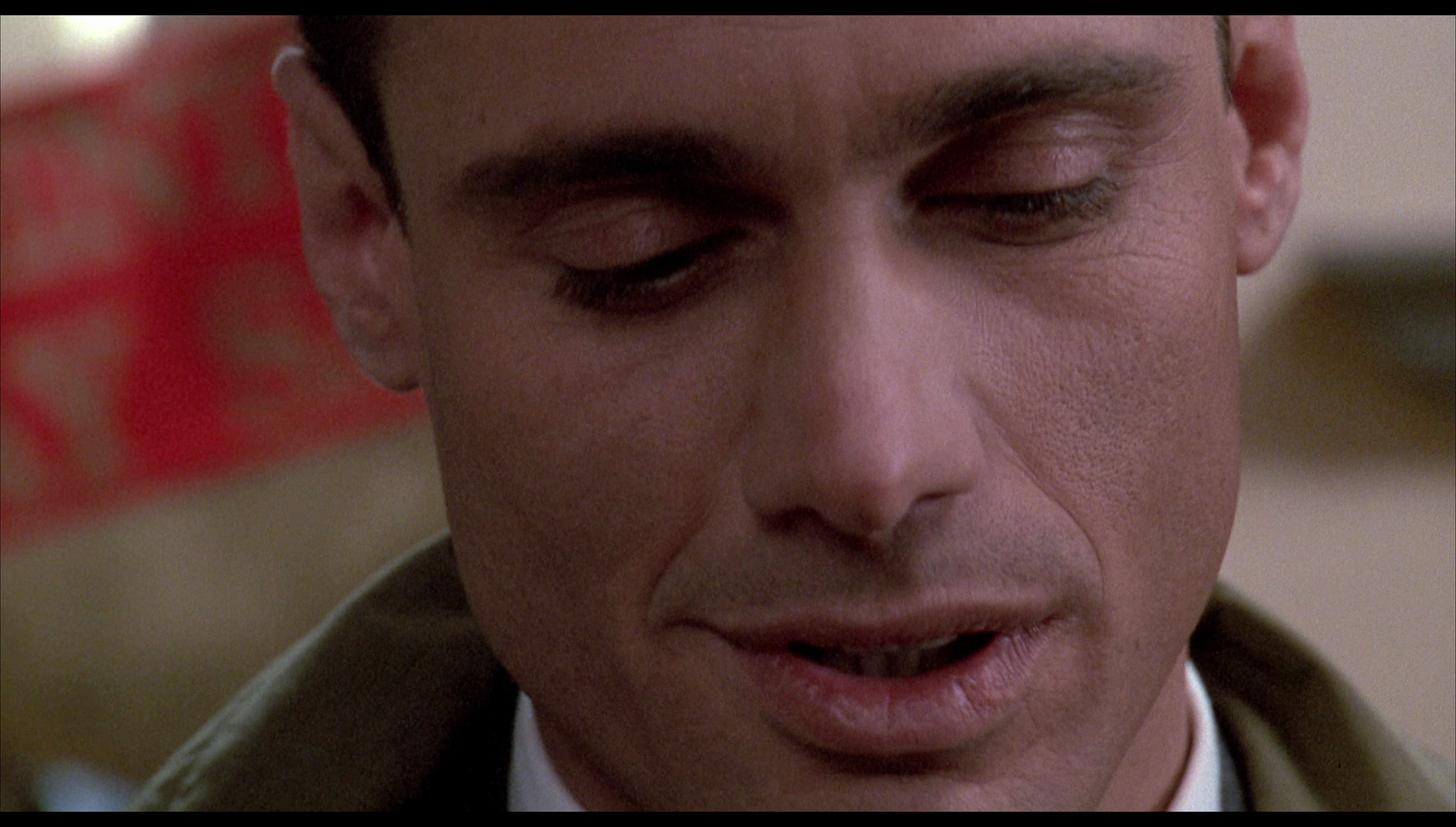
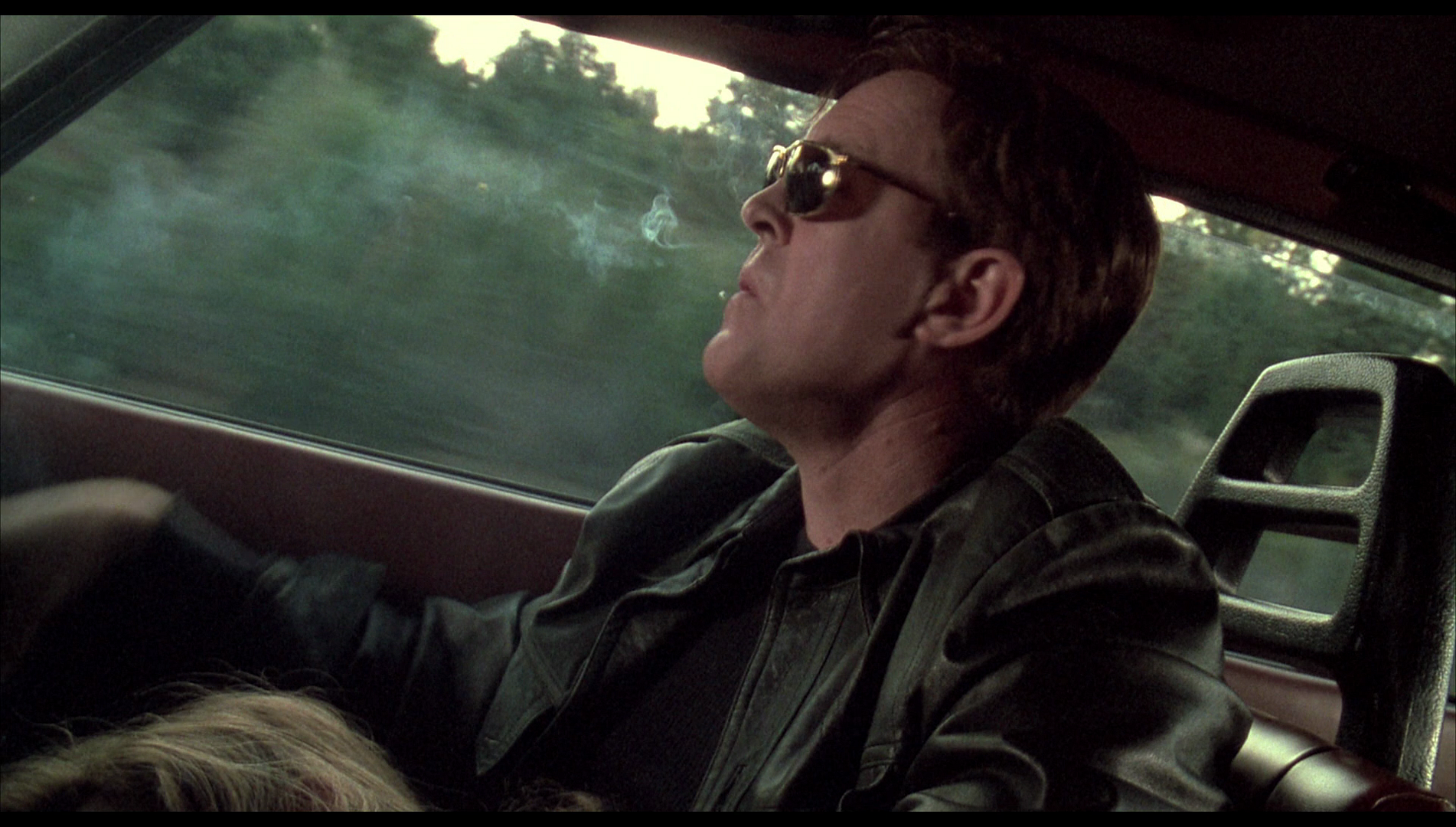
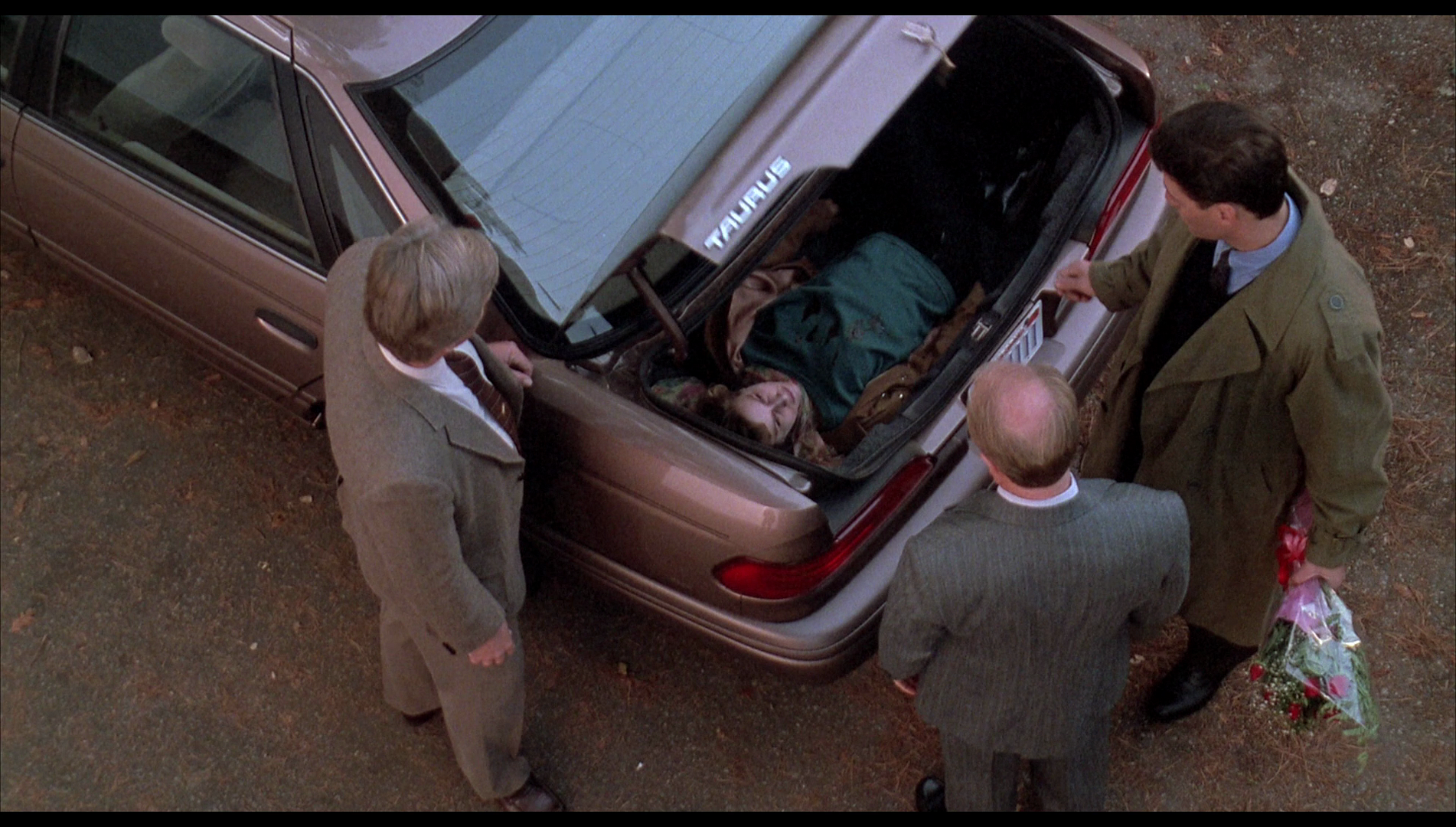
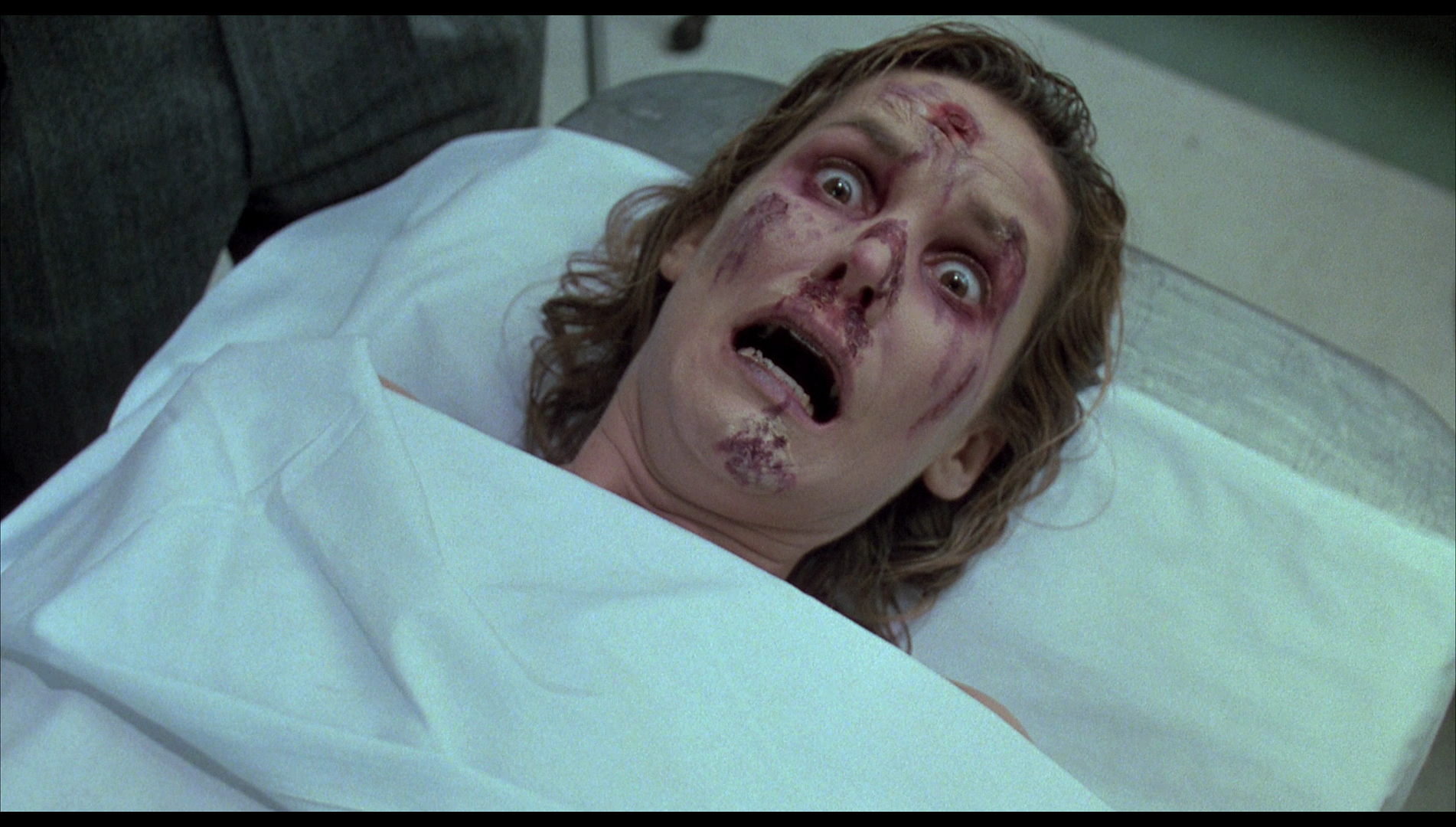
|
|||||

|